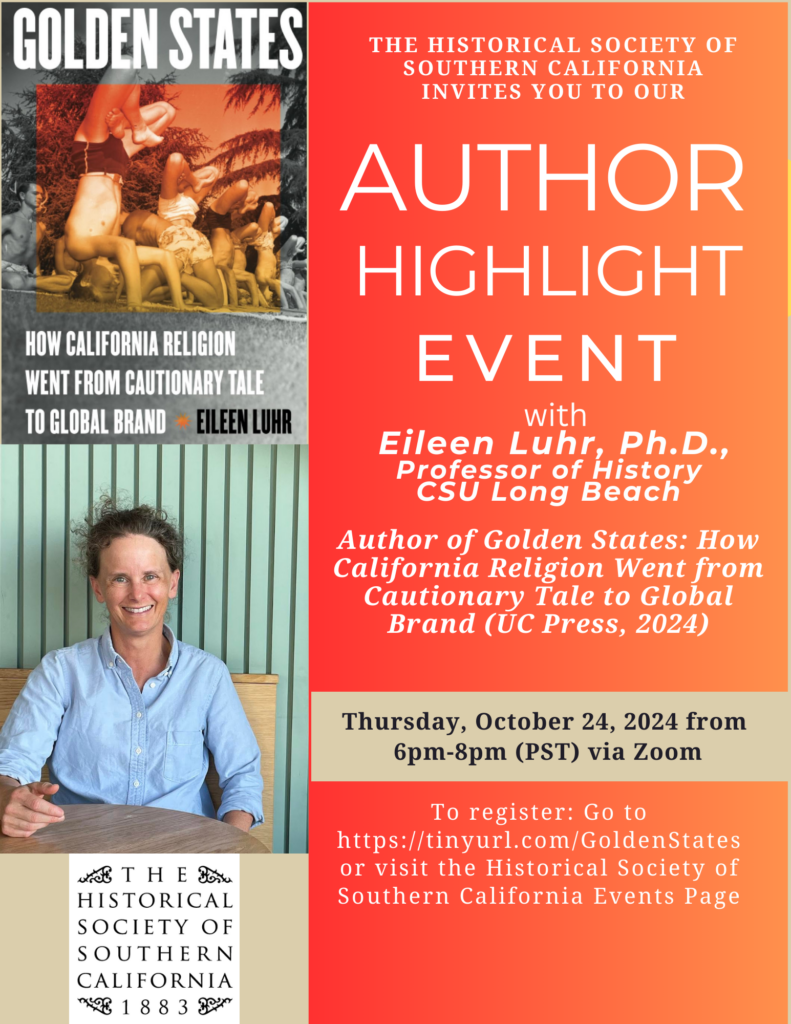
OCTOBER 2024: HSSC AUTHOR HIGHLIGHT EVENT
Presenter: Eileen Luhr, Ph.D., California State University Long Beach
Author of Golden States: How California Religion Went from Cautionary Tale to Global Brand
DATE: Thursday, October, 2024, 6:00pm-8:00pm (PST) via Zoom
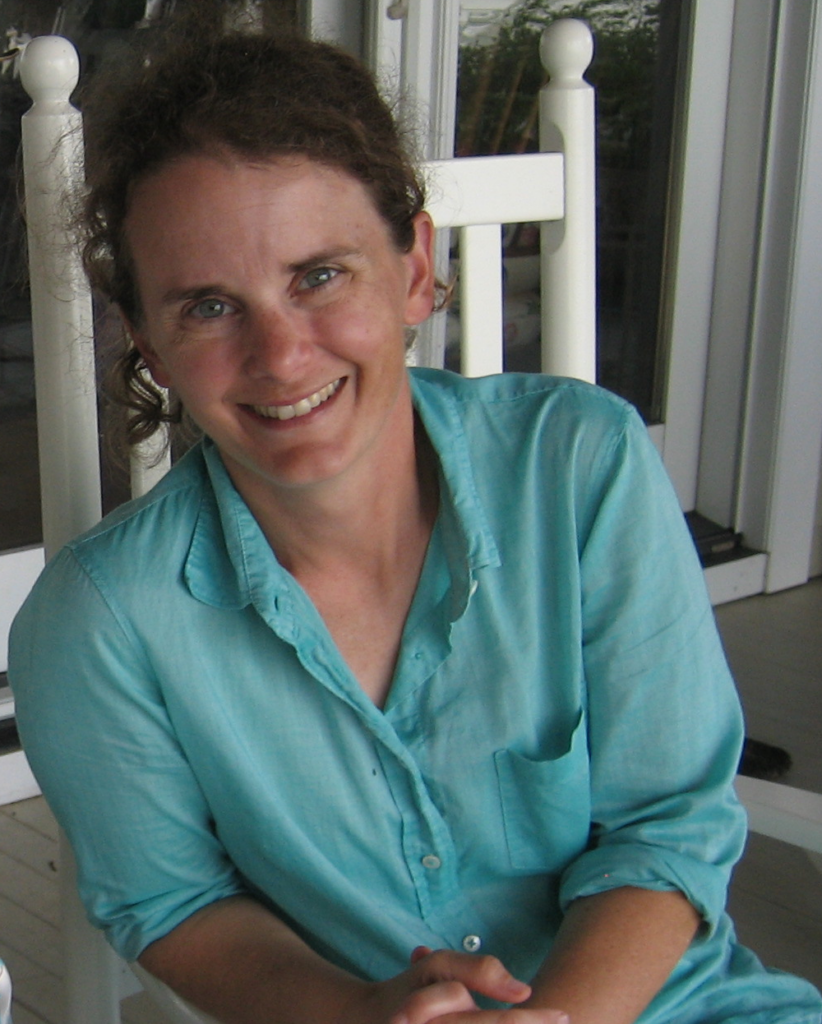
Dr. Eileen Luhr is a professor of history at California State University Long Beach. Her research interests include cultural and religious history, politics, modern United States history, and history pedagogy. Her first book, Witnessing Suburbia (University of California Press, 2009), explored the intersection of conservatism, religion, and suburbanization by demonstrating the ways in which conservative religious beliefs helped reshape the political and cultural landscape of the late twentieth century. Her current book, Golden States: How California Religion Went from Cautionary Tale to Global Brand, examines how religious beliefs get re-invoked, re-shaped, and re-imagined within new economic and cultural contexts. Professor Luhr also serves as the advisor and coordinator for the Social Science Credential Program. In addition to teaching the capstone course for credential students in the subject matter program, she teaches courses in United States religious and cultural history, the junior-level History and Theory seminar, and the introductory seminar for incoming graduate students. Dr. Luhr is a graduate of Williams College (BA) and UC Irvine (Ph.D.)
Celebration of Life
10 AM Saturday September 14, 2024

Merry Ovnick
Editor: Southern California Quarterly 2005-2023
Scholar, Teacher, Mentor, Author, Colleague, and Friend
The 1888 Doctors House, Museum and Gazebo
1601 West Mountain Street, Glendale, CA 91201
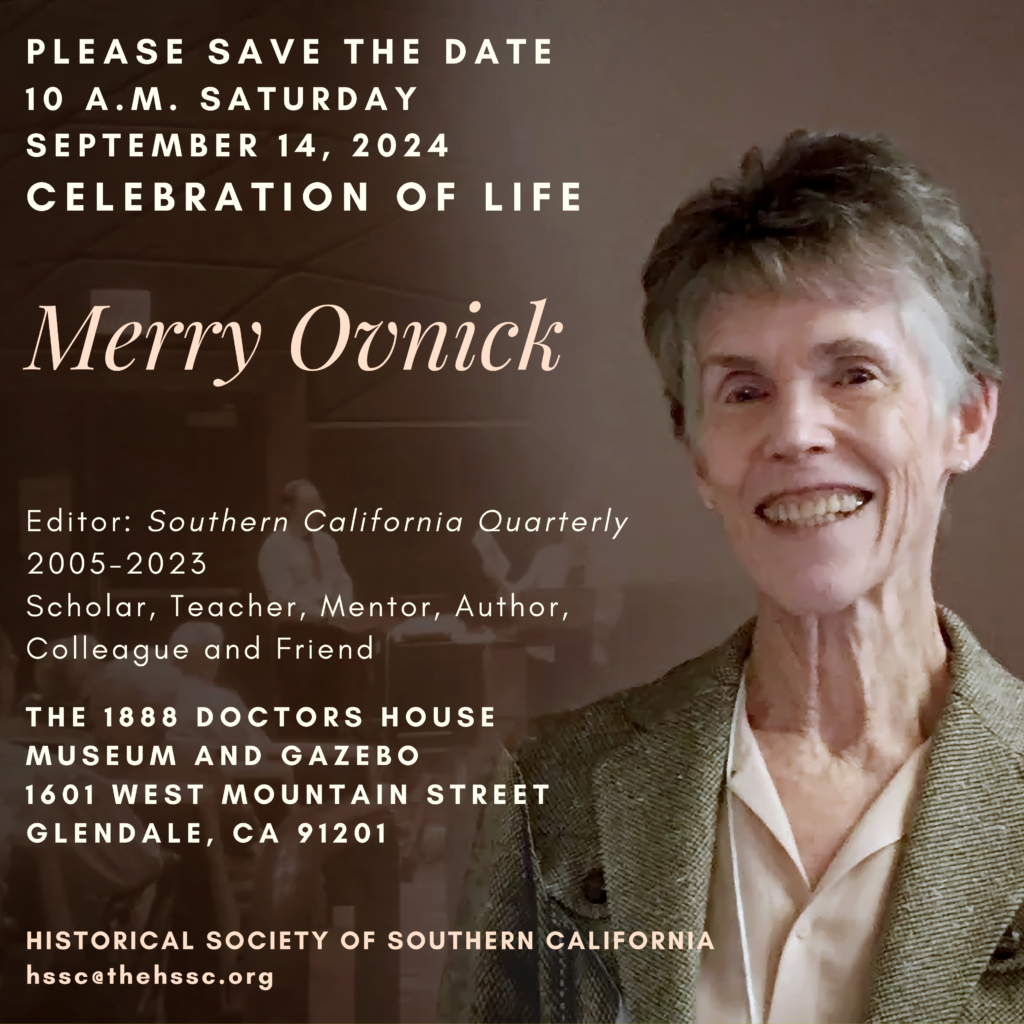
Please use the form below to sign up to attend Merry Ovnick’s celebration of life:
Directions
From I-5, take the Western offramp and head north (toward the mountains) until you come to Mountain Avenue. Turn right on Mountain and drive two blocks–the entrance to Brand Park will be on your left. Turn left and follow the signs to the Doctor’s House, which is in the upper portion of the park.
Parking
Please park in the parking lot above the baseball diamond that will appear on your left. There will be a short uphill walk to the Doctor’s House from the parking lot.
A limited amount of parking for those with limited mobility will be available on the shoulder of the access road to the Doctor’s House above the parking lot.
Cultivating Belonging in Public Spaces
The Historical Society of Southern California
HSSC Programing Calendar 2023-2024
Description of 2023-24 Theme
What does belonging look like in history? When we preserve, research and write history, where do we see ourselves and our communities?
The 2023-24 year’s HSSC program focuses on the theme of belonging in history, and the diverse and innovative ways our communities, educators, historians, and practitioners cultivate belonging in public spaces. This program looks at stories from the past that created spaces of just sustainability in the natural and built landscapes of California. The idea of “belonging” is contested space, and history has proven that laws, policies, and practices have excluded and otherized people in public spaces that were sites of segregation and violence. More importantly, how can we cultivate belonging that honors many stories? California as subject, is the story of success and failure, power and oppression, coalition building and conflict, and environmental conservation and destruction. Join us this year for an impactful and insightful program that features compelling topics to amplify the idea of “belonging,” in the natural and built environments of Southern California.
May 2024: HSSC AUTHOR HIGHLIGHT
Presenter: Donna J. Nicol, Ph.D., California State University Long Beach
Topic: Book-Black Woman on Board: Claudia Hampton, the California State University, and the Fight to Save Affirmative Action
DATE: Wednesday, May 8th, 2024, 6:00pm-8:00pm via Zoom
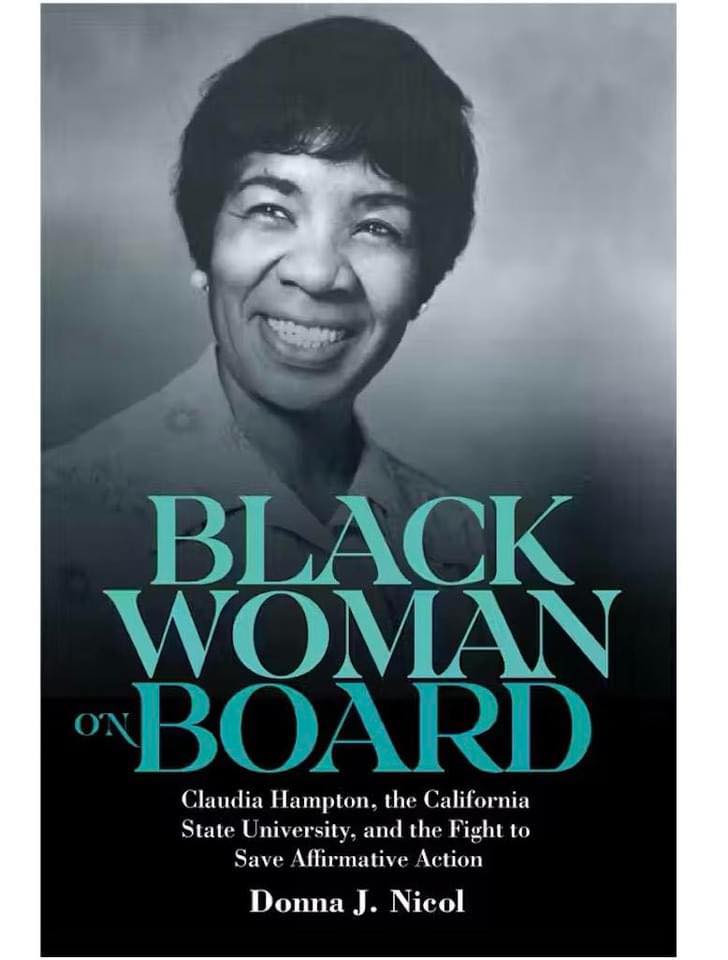
Black Woman on Board: Claudia Hampton, the California State University, and the Fight to Save Affirmative Action examines the leadership strategies that Black women educators have employed as influential power brokers in predominantly white colleges and universities in the United States. Author Donna J. Nicol tells the extraordinary story of Dr. Claudia H. Hampton, the California State University (CSU) system’s first Black woman trustee, who later became the board’s first woman chair, and her twenty-year fight (1974–94) to increase access within the CSU for historically marginalized and underrepresented groups. Amid a growing white backlash against changes brought on by the 1960s Civil Rights and Black Power Movements, Nicol argues that Hampton enacted “sly civility” to persuade fellow trustees, CSU system officials, and state lawmakers to enforce federal and state affirmative action mandates. Black Woman on Board explores how Hampton methodically “played the game of boardsmanship,” using the soft power she cultivated amongst her peers to remove barriers that might have impeded the implementation and expansion of affirmative action policies and programs.
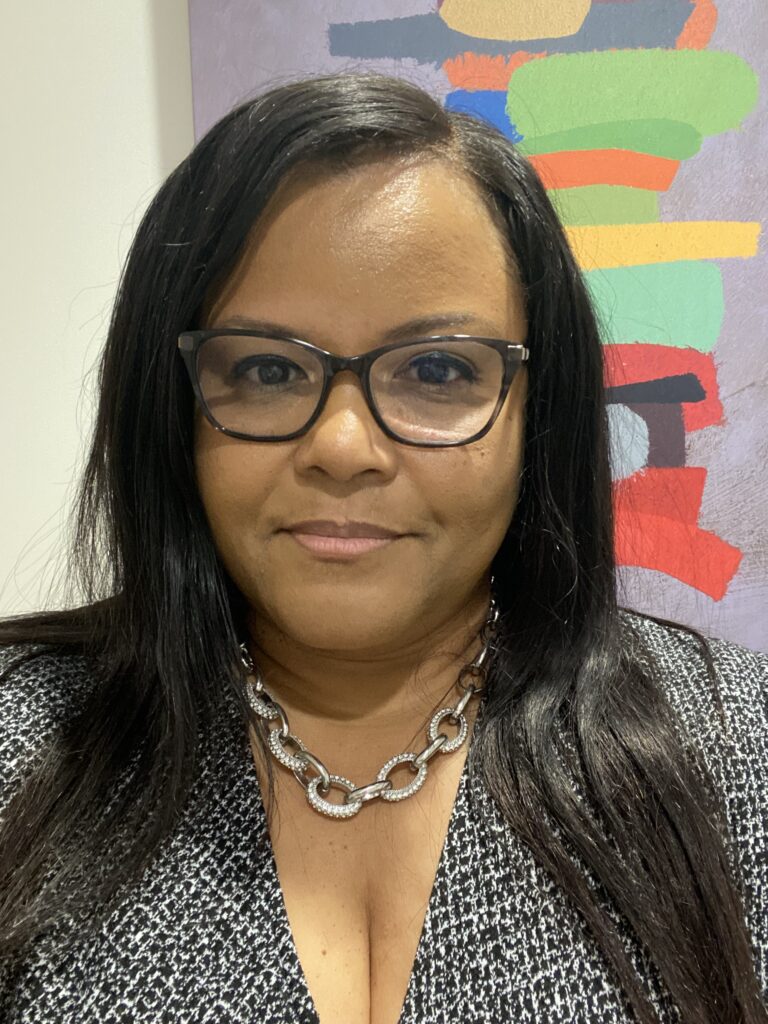
Donna J. Nicol is currently the Associate Dean of Personnel and Curriculum in the College of Liberal Arts and a professor of history at CSU Long Beach. Previously she was a professor and chair of Africana Studies at CSU Dominguez Hills and an associate professor of Women’s Studies at CSU Fullerton. Dr. Nicol’s research centers on the role of ‘external agents’ that impact Black student and faculty access and retention in American higher educational institutions, namely civil rights organizations, philanthropic foundations, and university trustee boards. Her work appears in The Feminist Teacher, Palimpsest: A Journal of Women, Gender, and the Black International, History of Philanthropy, Race, Ethnicity and Education, and Al Jazeera English Online.
Dr. Nicol’s new book is available for PreOrder: Black Woman on Board
For book and event information, visit: www.donnajnicol.com
June 2024: HSSC AUTHOR HIGHLIGHT
Presenter: Becky Nicolaides, PhD. (Research Affiliate at the Huntington-USC Institute on California and the West)
Topic: Book-The New Suburbia: How Diversity Remade Suburban Life In Los Angeles After 1945
DATE: Tuesday, June 4th, 2024, 6:00pm-8:00pm via Zoom
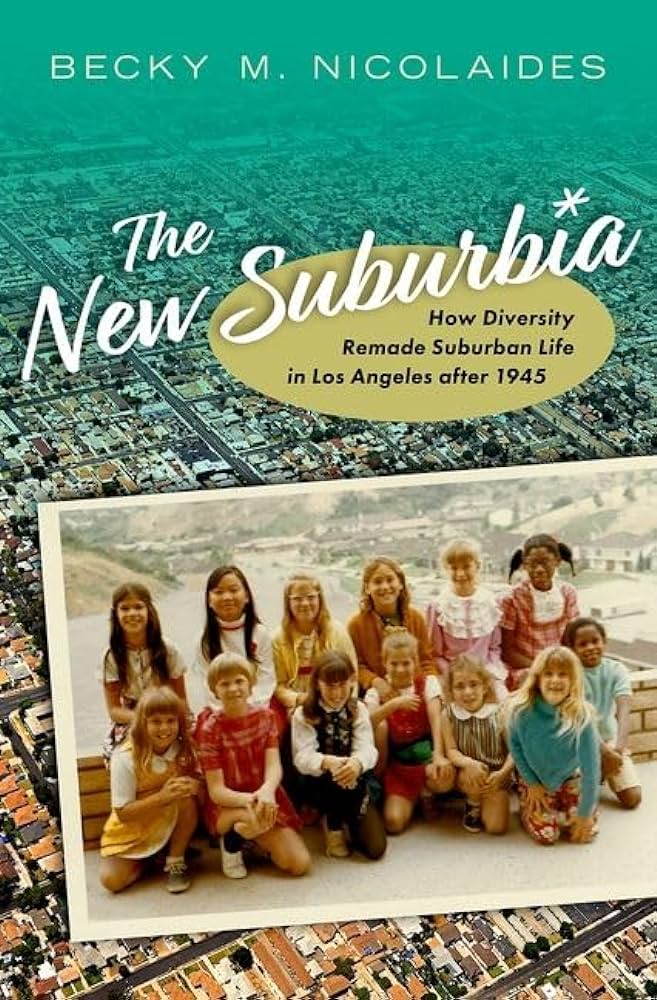
America’s suburbs have been transforming. The conventional story of suburbs as bastions of white, middle-class homeowners no longer describes the suburbs of America’s cities. Today they house a more typical cross-section of the nation–rich, poor, Black American, Latino, Asian, immigrant, the unhoused, the lavishly housed, and everyone in between. Stories of everyday suburban life, in the process, have taken on new inflections.
Nowhere are these changes more vivid than in Los Angeles. In this suburban metropolis and global powerhouse, lily white suburbs have virtually disappeared, and over two-thirds of the County’s suburbs have become majority minority.
Examining this vanguard of change from the postwar to the present, The New Suburbia follows the Asian Americans, Black Americans, and Latinos who moved into white neighborhoods that once barred them. They bought homes, enrolled their children in schools, and began navigating suburban life. They faced a choice: would they remake the suburbs, or would the suburbs remake them? In places like Pasadena, San Marino, South Gate, and Lakewood, suburbanites faced the challenges of living together in difference. Historian Becky Nicolaides explores a range of community experiences, from internal resegregation to suburban poverty, an embrace of law-and-order culture to police brutality, friendly neighbors to social withdrawal. In some communities, diverse residents continued longstanding habits of exclusion and perpetuated metropolitan inequality. In others, they embraced more inclusive, multicultural suburban ideals. Through it all, the common denominators of suburbia remained–low-slung landscapes of single-family homes and families seeking the good life.
An authoritative work based on a half-century of quantitative data and unpublished oral histories and interviews, The New Suburbia explores vital landscapes where the American dream has endured, even as the dreamers have changed.
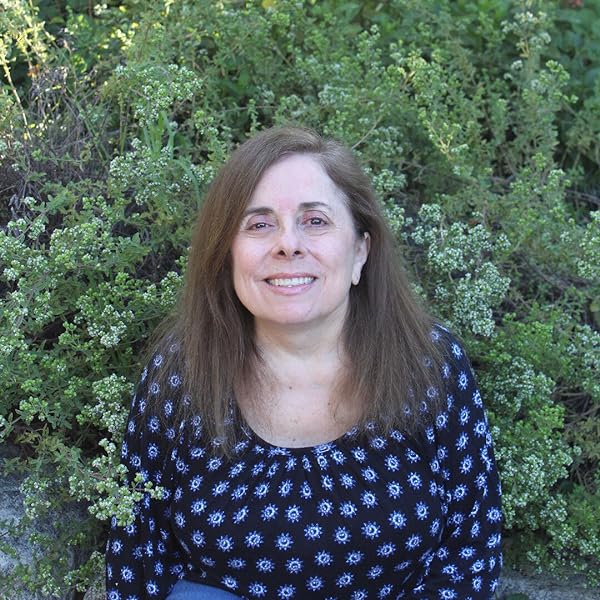
Becky Nicolaides is an LA-based historian and consultant specializing in the history of suburbs, metro areas, and Los Angeles. She is the author of three books on suburban history, and her writing has appeared in the New York Times, Los Angeles Times, and other outlets.
Becky has consulted extensively for public history projects for Survey LA, LA City, the State of California, and individual communities, and she served on the LA Mayor’s Working Group on Civic Memory. She is currently part of an EU Erasmus+ transnational project focused on the study of suburbanism and urbanism in the EU and US, and is a lead team member of the NEH-supported “LA County Demographic Data Project, 1950-2010.”
She’s taught at UCSD, UCLA, Pitzer College, and Arizona State University West, and is currently a research affiliate at the Huntington-USC Institute on California and the West. Becky is a co-founder of History Studio, a partnership of award-winning scholars providing expert research, script vetting, and original content for the entertainment industry. She received her BA from USC, and her MA and PhD from Columbia University. Becky is a lifelong Angeleno.
To reach Dr. Becky Nicolaides’ Website for more information click here.
To access the companion page for the book please click here.
For a storymap on LA suburbia, published recently with Jakub Zejdlik, please click here.
To browse Dr. Nicolaides History Studio website, please click here.
To access Dr. Nicolaides Media Kit and information on other published work, please click download below.

November 2023: HSSC AUTHOR HIGHLIGHT
Presenter: Stacy Smith, PhD. (Oregon State University)
Topic: Slavery and Unfree Labor in Early Statehood California.
DATE: Wednesday, November 8th, 2023, 6:00pm-8:00pm via Zoom
Despite its antislavery constitution, California was home to a dizzying array of bound and semi-bound labor systems: African American slavery, American Indian indenture, Latino and Chinese contract labor, and a brutal sex traffic in bound Native American and Chinese women. Using untapped legislative and court records, Stacey L. Smith discusses the rise and decline of these different types of unfree labor in California from the Gold Rush to the Civil War.

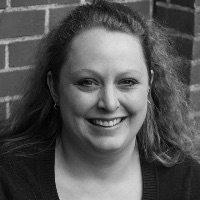
Dr. Stacey L. Smith is an Associate Professor of History at Oregon State University where she specializes in the history of the American West during the Civil War and Reconstruction eras. She is the author of Freedom’s Frontier: California and the Struggle over Unfree Labor, Emancipation, and Reconstruction (2013).
October 2023
Presenter: Carol Kwang Park
Topic: The contributions, successes, and struggles of Korean Americans in Southern California.
DATE: RESCHEDULED TBA
Korean American History & Identity
This lecture will focus on the untold tales of the Korean American community and how this small population navigated the US landscape in the early 20th century. The Korean American identity has evolved throughout its 120-year history from independence fighters founding the first Korean Aviation School and Corps. in Willows, CA, to a focus on reunification of North and South Korea, and to where we are today. This lecture will draw from the textbook Korean Americans: A Concise History.
September 2023
Presenter: Kristine Ashton Gunnell, Ph.D.
Abstract/Title: Financing Social Change: The Daughters of Charity Foundation and Catholic Efforts to Disrupt Poverty and Empower through Education.
DATE: September 27th, 6-8pm
Since their arrival in Los Angeles during the 1850s, the Daughters of Charity have embraced faith as a tool to advocate for disadvantaged and underserved communities. While their services have changed over the last 160 years, these Catholic sisters continue to cultivate an ethos of care and belonging which crosses race, class, and religious identities as they assist individuals and families navigate the systems which keep people in poverty. Recognizing that transformative social change takes vision, commitment, and funding, the Daughters updated their community’s funding infrastructure by establishing the Daughters of Charity Foundation in 1984. By embracing evolving forms of financing, the Daughters provided their ministries greater opportunities to thrive and promoted the sustainability of their works. This presentation will discuss the Daughters educational initiatives in Los Angeles in the early twenty-first century, and how the sisters’ innovations reflected the long history of women’s efforts to pursue freedom, opportunity, and agency on behalf of the common good in the mythic West.
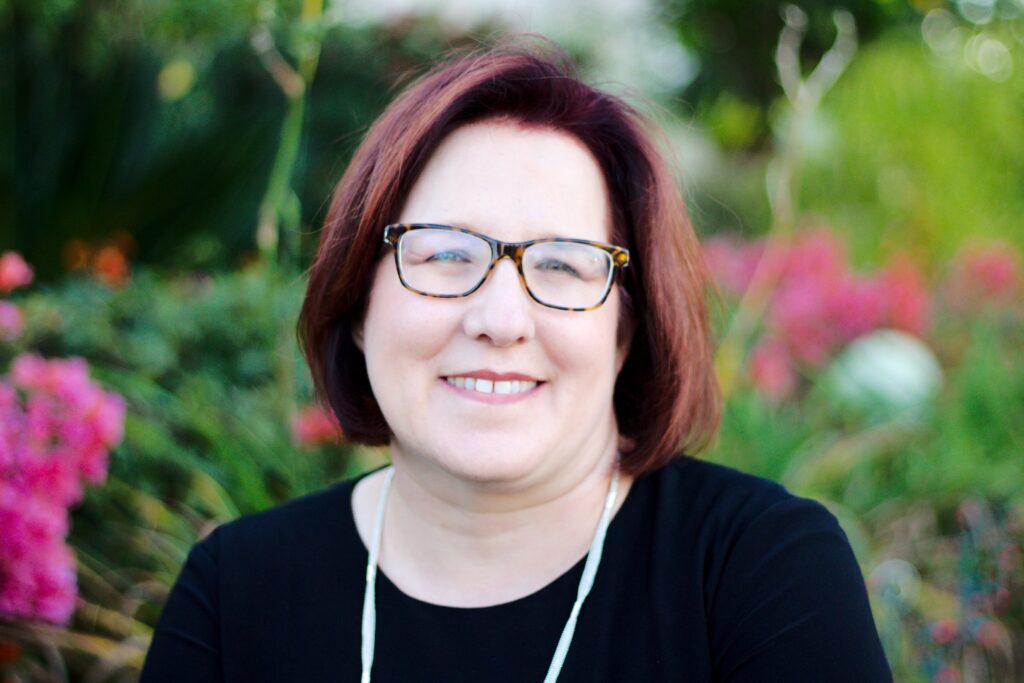
Bio: Kristine Ashton Gunnell completed her Ph.D. at Claremont Graduate University, where she is currently a Visiting Scholar in its School of Arts and Humanities. She specializes in the history of Women and Gender in the American West, especially the role of religious women in public and private life. Gunnell is the author of Daughters of Charity: Women, Religious Mission, and Hospital Care in Los Angeles, 1856-1927 (DePaul Vincentian Studies Institute, 2013). In 2014, she won the Western Historical Association’s Arrington-Prucha Prize for the best article published on the history of religion in the west and she has published articles in the Southern California Quarterly, Vincentian Heritage, and the U.S. Catholic Historian. Gunnell lives in Simi Valley, California, and she is currently writing a history of the Daughters of Charity Foundation and its strategies to fund the sisters’ social justice efforts in the late twentieth and early twenty-first centuries.
Presenters:
Rev. Charles Brown-President and Founder of the Compton 125 Historical Society
Pauline Brown-COO, Co-Founder of the Compton 125 Historical Society
Topic: Preserving the History and Legacy of the City of Compton
DATE: September 6th, 6-8pm via Zoom
Join us to discuss the preservation, legacy and the role of the Compton 125 Historical Society for the city of Compton.

1. Historical Landmarks: the importance of preserving iconic landmarks ie. buildings, monuments, and landmarks that hold significance in the city.
2. Cultural Inheritance: discuss how the preservation of cultural traditions, festivals, and customs contributed to maintaining Compton’s unique identity.
3. Historical Exhibits: the role of exhibitions and showcasing artifacts, documents, and artworks that highlight the city of Compton’s past.
4. Community Engagement: ways to involve residents in preserving the city’s history such as through oral history, workshops, and events.
5. Education Initiatives: the importance of educating the younger generation about the city’s history, school programs, tours, and educational resources.
6. Historical Preservation Ordinance: the impact of the legal framework that protects historical sites and structures from demolition or modifications.
7. Public Spaces and Parks: a look at incorporating the element of historical spaces for reflections and appreciation.
An Evening with Dr. Alicia Gutierrez-Romine
“She Thought California was Without Prejudice”: Race and Medicine in Jim Crow California
Thursday, March 9th 6:00PM-8:00PM
Please click and fill out form for this talk
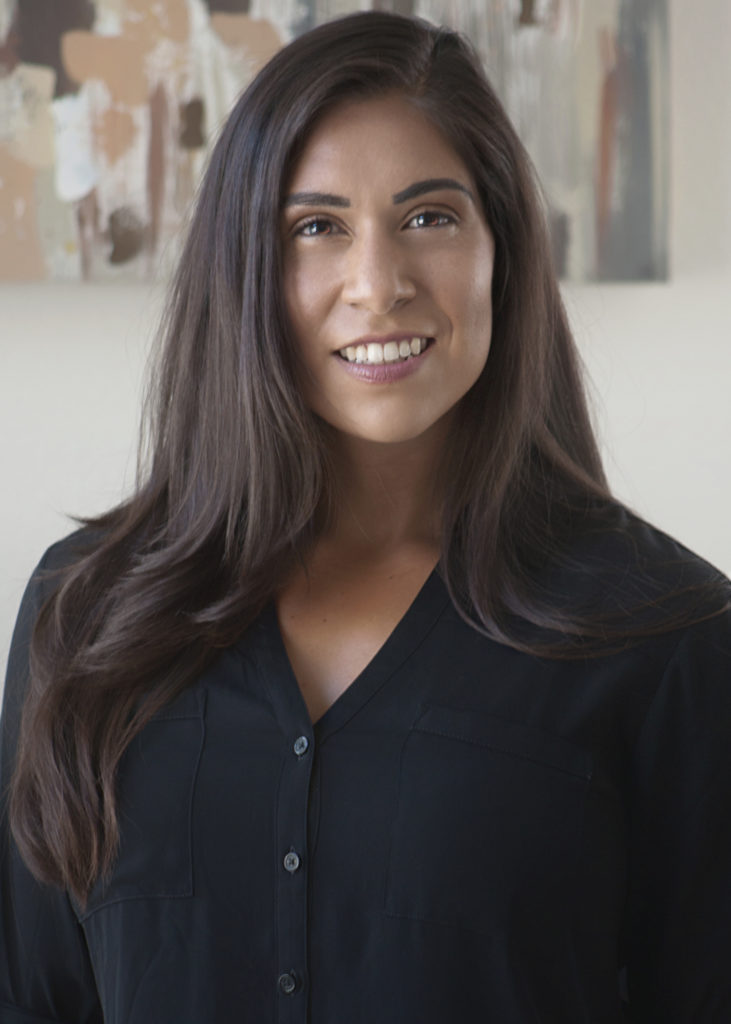
Dr. Alicia Gutierrez-Romine is an associate professor of U.S. History at La Sierra University with an emphasis on California, the U.S.-Mexico border, and the history of medicine. Her publications include a chapter “Abortion and Intimate Borderlands” in Beyond the Borders of the Law: Critical Legal Histories of the North American West (University Press of Kansas, 2018); her book, From Back Alley to the Border: Criminal Abortion in California, 1920-1969 (University of Nebraska Press, 2020), and her recent article in California History “Abortion and the Law in California: Lessons for Today.” Her current research explores intersections of race and professional medicine in Southern California in the early 20th century.
Abstract: When Edna Griffin began applying to medical schools in 1929, she looked to California first. However, unable to gain admission to any medical school in California on account of her race, Griffin earned her medical degree from Meharry Medical College in Tennessee—one of only two black medical schools in the United States officially recognized by the American Medical Association. After earning her degree, Griffin eventually made her way to Southern California where she became the first Black woman physician in Pasadena, California. However, Dr. Griffin was dismayed by Jim Crow’s grasp on a city renowned for its supposed equality. This paper explores Dr. Griffin’s experiences as a Black woman physician in Pasadena, California and some of the larger related to race and professional medicine in California. Ultimately, Dr. Griffin realized she could not fully escape Jim Crow in California.
An Evening with Dr. Anne S. Choi
“Not Your Model Minority”: The Japanese American Citizens League and the Thomas Noguchi Case
Thursday, March 23rd 6:00PM-8:00PM
Please click and fill out the form for this talk
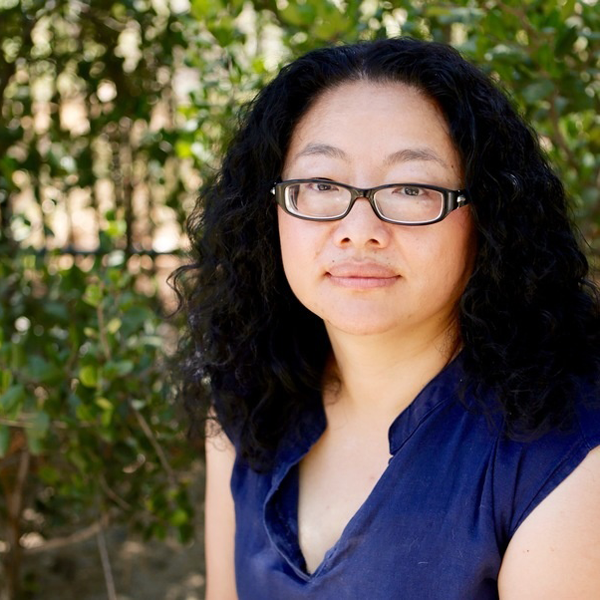
On July 11, 1969, Japanese United in Search for Truth (JUST) took out a full- page advertisement in the Los Angeles Times protesting the suspension and dismissal of Dr. Thomas Noguchi, the Los Angeles County Chief Medical Examiner-Coroner (CME) by the Los Angeles County Board of Supervisors for erratic behavior, purported drug use, forcing subordinates to “perform demeaning tasks,” and threatening them with “grievous bodily injury. Signed by nearly every Japanese American organization in Southern California as well as prominent community members, JUST called for justice and declared that “if this can happen to one of us, it can happen to one of you.”
For Japanese Americans, Noguchi’s professional ascent represented a public affirmation that Japanese Americans would be treated fairly in the aftermath of their wartime incarceration. Consequently, his suspension and dismissal symbolized an undermining and affront to the hard-won postwar social and economic stability that Japanese Americans had worked to achieve. In response, the Japanese American Citizen’s League threw their support behind Noguchi and the led the campaign to have Noguchi reinstated.
In this talk, I argue that the Noguchi case emerged at a moment of reckoning for the JACL’s history of accommodation as they were confronted with the limits of assimilation and upward mobility in the face of postwar racism. Within this reckoning, the JACL departed from its history of accommodating racism and, for a brief moment, instead confronted it, rejecting the mantle of the “quiet American,” which entailed knowing one’s place in the racial hierarchy, that it had cultivated as the postwar ideal. By doing so, Japanese Americans in Los Angeles for the first time had the space to grapple publicly with the meaning of the wartime incarceration and its impact on their lives and their futures. Rather than continuing to rely on the narratives of Nisei wartime valor and the successful rebuilding of their lives after the war, the Noguchi case led many Japanese Americans to address the racist discourse that had contributed to their incarceration, to question the limits of the “model minority,” and to experience first-hand the power of grassroots organizing. In turn, these experiences for the JACL and the Japanese American community were part of the necessary first steps toward the redress movement.
Community Focus Event: Fillmore Historical Society
A Hidden Gem: The Fillmore Historical Museum
Thursday, 17 November, 2022 from 6:00 PM – 8:00 PM via Zoom
To sign up, click HERE.
Fillmore, CA. was founded in 1888, and named after Jerome Fillmore, the local area superintendent for the Southern Pacific Railroad. Rand McNally gave its population as 150 in 1900. After incorporation in 1914, the town steadily grew having 1,597 people in 1920, 3,884 in 1950, 13,643 in 2000. The 2020 census put Fillmore’s population at 16,419. The town’s growth was based on agriculture – initially barley and lima beans, walnuts and apricots, and later citrus and avocadoes – and oil. Both industries still predominate the area’s economy.
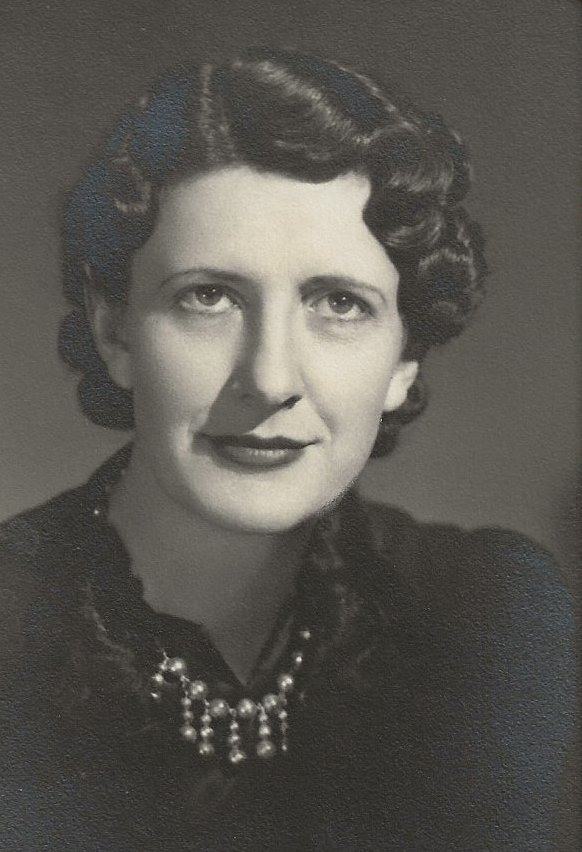
In 1972, the Fillmore Chamber of Commerce approached a retired Spanish teacher, Edith Moore Jarrett, to start an historical museum. Mrs. Jarrett was not just any retired Spanish teacher. She had written the Spanish textbooks, El Camino Real I. II, and other books. The textbooks became the most commonly used series of Spanish text books in the United States for several decades beginning in 1940 and into the 1970s. She also loved traveling and history. She was a Fillmore native, graduating from Fillmore Union High School in 1916 and from the University of Southern California in 1921. After graduation from USC, she returned to Fillmore and taught in its schools until her retirement.
Mrs. Jarrett accepted the Chamber of Commerce’s request. Space was rented on the ground floor of the Masonic Temple Building on Central Avenue and the word went out to the population of the area that she was looking for items for the Museum. She was overwhelmed with donations and soon out of space.
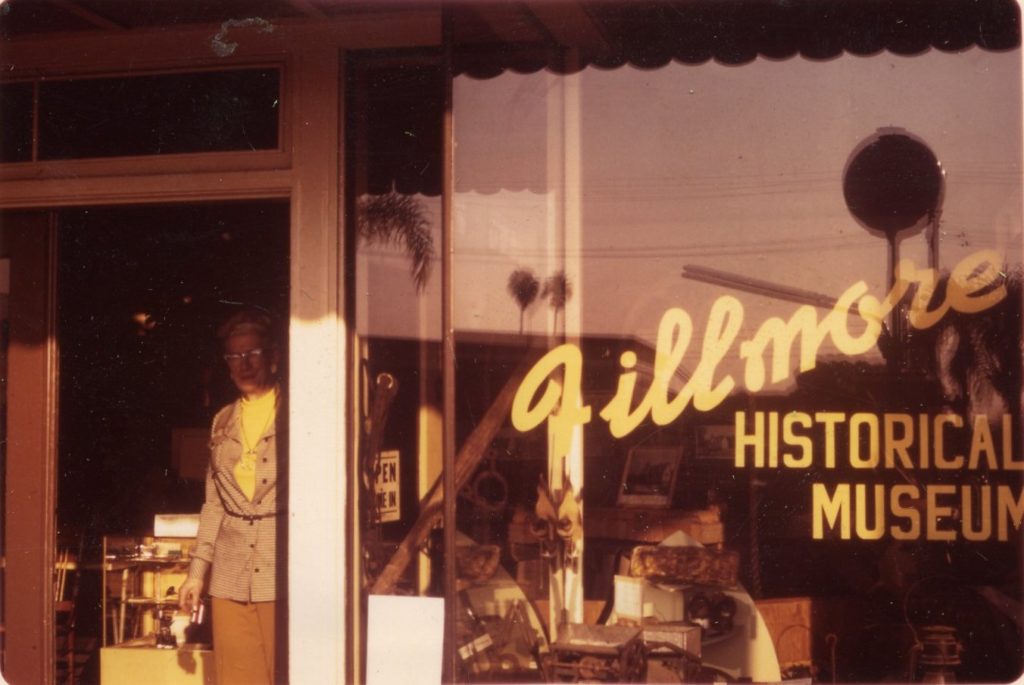
In 1974, the Southern Pacific Railroad was ready to demolish the depot they had built in Fillmore in 1887. It had not been used except for storage for many years and was in very poor condition. Edith Jarrett bought it for $1 plus 5₵ tax on the condition that she immediately move it from its original site. She petitioned the City which provided a lot on Main Street. Mrs. Jarrett then paid for the moving and renovation of the Depot as a donation to the town of Fillmore.
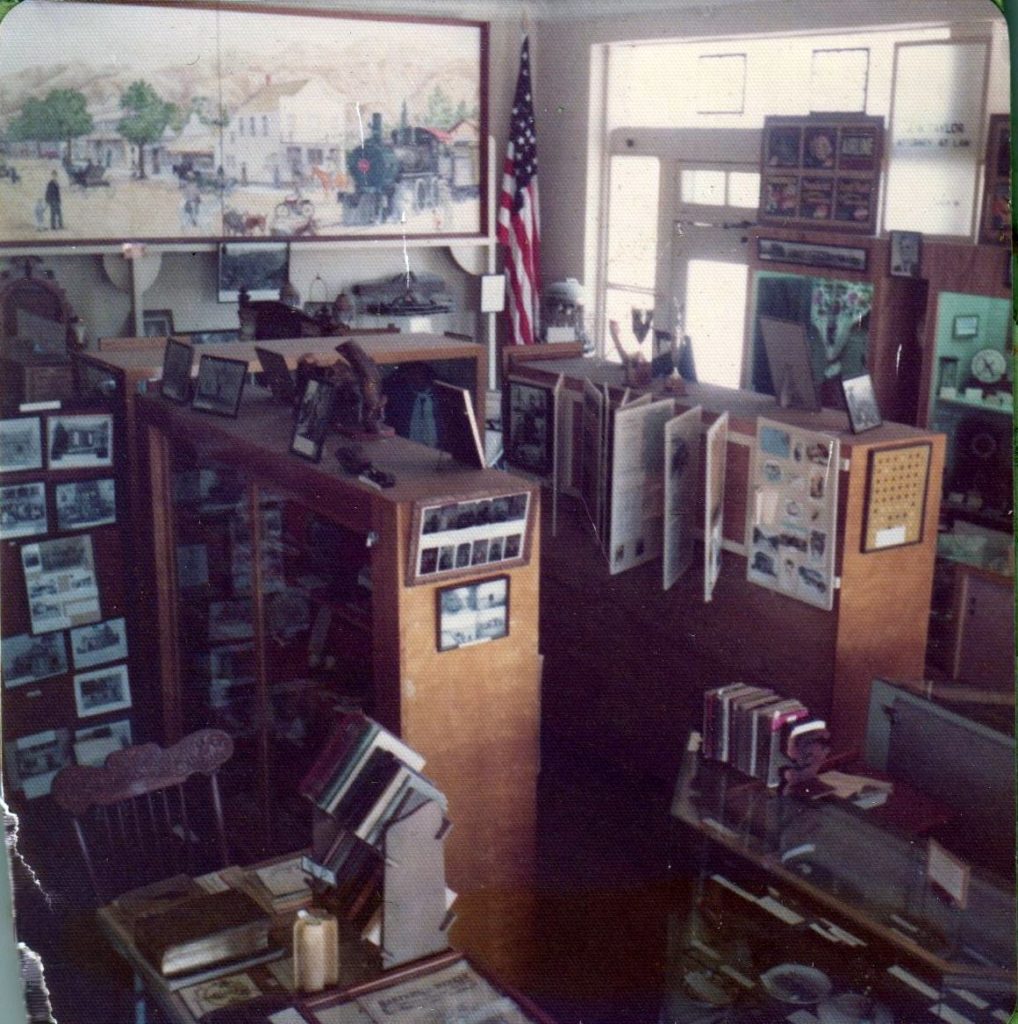
Fifty years have passed since the Fillmore Historical Museum opened its doors. After extensive damage in the 1994 Northridge Earthquake, the depot was again moved and renovated.
The new site for the Museum was only a block from the old site, but now had room for a 1905 bungalow, the 1919 Rancho Sespe bunkhouse, a 1960’s caboose and several smaller buildings. An entirely volunteer operation, it receives no funding from any government agency.
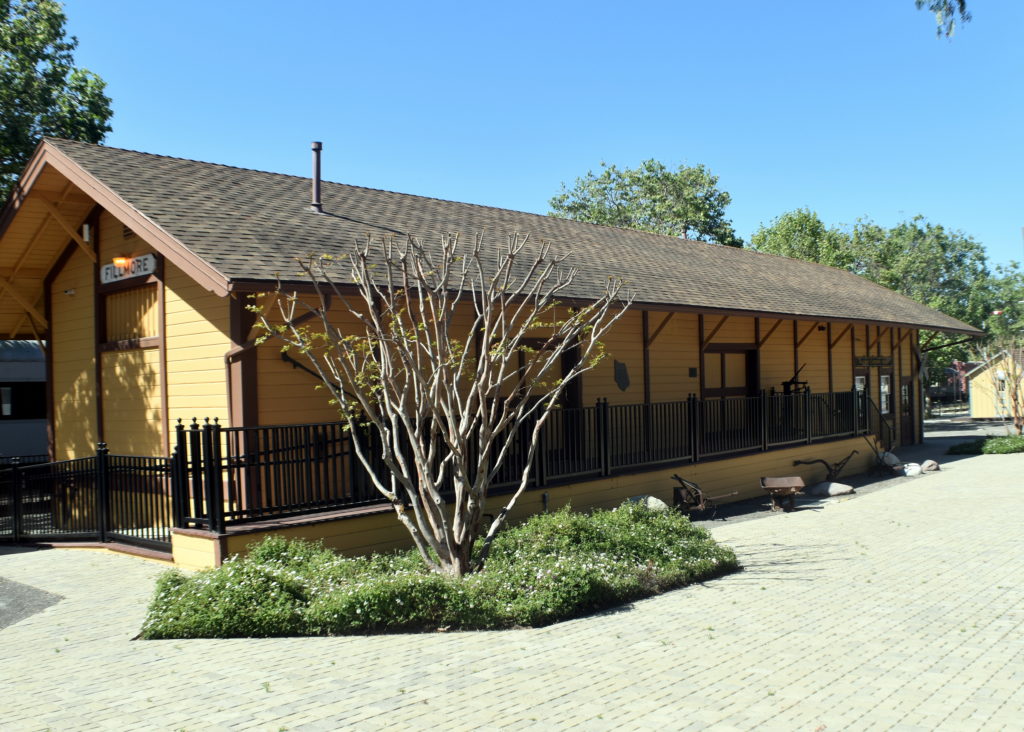
The Museum is open four days a week and by appointment. It regularly hosts interns from local colleges and universities as well as welcoming local school children. It’s website, fillmorehistoricalmuseum.org, includes information about the Museum and its programs as well as over one hundred stories about the Fillmore, Bardsdale, Sespe and Piru communities.
Community Based Archives: UC-Riverside & Redlands
Building A People’s History of the Inland Empire
Thursday, 3 November, 2022 from 6:00 PM – 8:00 PM via Zoom
To sign up CLICK HERE.
A People’s History of the I.E.: Storyscapes of Race, Place, and Queer Space in Southern California is a digital, community-based archiving and mapping project that documents the lived experiences and memories of Riverside and San Bernardino County residents. It is focused on stories of working people, communities of color, and LGBTQ+ individuals whose experiences have often been under-represented in traditional archives and histories. Presenters will share their efforts to build and make publicly available several interrelated digital archival collections, and how they strive to maintain community ownership of them. These archives let us see how residents of San Bernardino have agitated for civil rights, how women from Redlands to Riverside mobilized their positions within the citrus industry to improve their communities, and how environmental justice leaders have advocated for a better I.E. Presenters will highlight stories from the archive and demonstrate the different ways we have deployed these materials for museum exhibits, digital storytelling, and map-based presentations.

Jennifer Tilton is a professor of Race and Ethnic Studies at the University of Redlands. She works with the Bridges That Carried Us Over Project to support a community-led effort to document Black history in the Inland Empire. She works collaboratively with students and community leaders to build historic census maps, georeferenced archives, and StoryMaps that make visible historic communities of color and patterns of segregation in the Inland Empire. Visit the Bridges Project and People’s History StoryMaps.
Catherine Gudis is a professor of History at the University of California, Riverside, where she directs the graduate program in Public History and holds a Pollitt Endowed Term Chair for Interdisciplinary Teaching and Learning. She directs the Relevancy & History Project, a collaboration with California Citrus State Historic Park, co-curated Climates of Inequality: Stories of Environmental Justice, and continues to work on a series with KCET, “Empire of Logistics.”
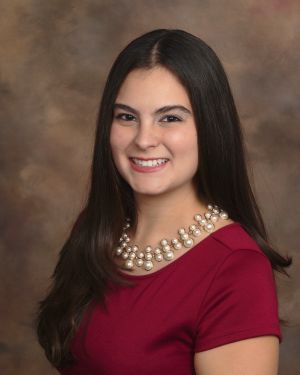
Audrey Maier received her master’s and Ph.D. from the University of California, Riverside. She is currently on the Digital Initiatives team at the National Museum of the American Latino and co-director of A People’s History of the Inland Empire Digital Archive. Maier is a part of a number of Inland Empire cultural organizations, such as the Loma Linda Area Parks and Historical Society and Relevancy & History Project, to create digital community-based archives, oral history projects, and community history programming.
Drs. Gudis and Maier have produced a website, Sweet and Sour Citrus, bringing together archival materials, research and educational resources from A People’s History of the I.E. and Relevancy & History.
Support for mapping and digital archiving of A People’s History of the Inland Empire is provided by the National Endowment for the Humanities-Social Science Research Council Sustaining Humanities Infrastructure Project, Relevancy & History Project partnership between UCR and California State Parks, University of Redlands Center for Spatial Studies, and UCR Library’s Digital Scholarship.
Community Focus Event: St. Francis Dam National Memorial Foundation
The St. Francis Dam Disaster of 1928
Thursday, 13 October, 2022, 6:00 PM – 8:00 PM via Zoom
Presented by the St. Francis Dam National Memorial Foundation
Featuring: St. Francis Dam National Memorial Foundation President, Dr. Alan Pollack, and Executive Director, Dianne Hellrigel
Join Zoom Meeting
https://us06web.zoom.us/j/87876270585
Meeting ID: 878 7627 0585

Alan Pollack is a physician, practicing for more than three decades in the San Fernando Valley area, and as president of the Santa Clarita Valley Historical Society, Dr. Pollack promotes and educates the public on the rich history of the Santa Clarita Valley. After a visit to Johnstown National Memorial in Pennsylvania in 2012, Dr. Pollack originated the idea to bring a National Memorial to the site of the St. Francis Dam Disaster to honor the memories of the over 400 victims of the flood. His and Dianne Hellrigel’s efforts, along with a host of other advocates, finally culminated in the establishment of the St. Francis Dam National Memorial and Monument, signed into law by the President of the United States on March 12, 2019, coincidentally the 91st anniversary of the disaster.

Executive Director Dianne Hellrigel has a background in land legislation and preservation. She has preserved 450,000+ acres of wilderness, 2 Wild and Scenic Rivers, 2 National Monuments and 1 National Memorial. When Alan approached her to work on legislation for the St. Francis Dam she was already overwhelmed with 7 existing legislations in D.C., but then she remembered that her grandparents, aunts and mother walked on the top of the St. Francis Dam, two days before it ruptured, killing more than 400 innocent people on the night of March 12-13, 1928. Remembering a trip to the dam site with her mother when she was 6, made the Dam legislation her #1 priority. After nearly 8 years of lobbying congress, the bill was finally passed on March 12, 2019.
Subsequent to the passage of the bill, Dianne has interviewed many of the progeny of the survivors of the dam break and resulting flood. She has many personal stories of amazing survivals and tragic deaths that she will relay in her presentation. All of the stories are heart breaking and will be related as the stories were related to her. Dianne and Alan have worked together to bring the story of the St. Francis Dam disaster out of the shadows, and are now educating the public through their presentations.
Presentation Abstract:
Alan will discuss the history of water in the natural and built environment of California, including the dependence upon the Los Angeles River in the early days of the Pueblo, Mulholland’s idea about securing water, the Water Wars in the Inyo, the building of the St. Francis Dam, and ultimate failures, including environmental disruptions to the indigenous landscape. He will also discuss his idea that came to fruition in honoring the hidden tragedy of the St. Francis Dam to develop a National Memorial.
Community Focus Event: The San Fernando Valley Historical Society
Segregation and Resistance in the San Fernando Valley in the 20th Century: New Approaches and Findings
Thursday, 29 September, 2022 6:00 PM – 8:00 PM via Zoom
The first event of the 2022-2023 Season will feature Daisy Herrera, PhD student at UCR and an intern at the Smithsonian, and the San Fernando Valley Historical Society.
Join Zoom Meeting
https://us06web.zoom.us/j/82976398402
Meeting ID: 829 7639 8402

Daisy R. Herrera is a Ph.D. student in the History Department at the University of California, Riverside and has an interdisciplinary academic background in History, Women’s Studies, Latin American Studies, and Chicano Studies. Her research focuses on the ethnic Mexicans’ struggles and resistance against racial formation, citrus labor exploitation, and school and housing segregation within L.A. County’s San Fernando Valley (SFV) throughout the twentieth century. By approaching the archival silences and incorporating oral histories through a transnational lens of the concept of “Greater Mexico,” Daisy will trace the socio-political development of the area pre-and-post the Chicano Movement. She is involved with various local and national organizations including the SFV Historical Society, the Oral History Association, the Southwest Oral History Association, Mujeres Activas en Letras y Cambio Social, and has published a few book reviews for the Southern California Quarterly Journal.
Presentation Abstract:
The San Fernando Valley, nestled between the Santa Susana, Santa Monica, San Gabriel, and Verdugo Mountain ranges just north of the Los Angeles Basin, is a multi-ethnic area whose contribution to the emerging Southern California historiography has been largely understudied. With its original settlement dating back to the Tongva peoples, the area endured various sediments of colonialism (Spanish, Mexican, and Anglo) in less than a century, fabricating a Spanish Heritage Fantasy Past culture strengthened byt the arrival of tycoon developers such as Senator Charles Mcclay, Isaac Van Nuys, George K. Porter, and Isaac Lankershim and the inevitable boom of Southern California’s “Citrus Belt.” This presentation will showcase the history of the ethnic Mexican community through two overlapping ways: first, by underscoring the struggles against racial formation determined by the area’s cemetery segregation, death certificate content, and public health disparities. And second, by reconstructing the history and expansion of Pico Court, the citrus-company sponsored duplex dwelling that housed citrus laborers escaping the Mexican Revolution and later the braceros exploited during and after World War II. Despite the racial formation defining place-making throughout the greater San Fernando area, ethnic Mexicans became agents of resilience by developing and strengthening a transnational community identity from 1910 to 1965. The community’s labor and leisure activities were fundamental in the economic expansion of the Valley and the development of one of the largest ethnic Mexican populations of Greater Los Angeles.
Environmental Landscapes: The Indigenous Garden(s) at Cal State LA
Thursday, 22 September, 2022 6:00 – 8:00 PM via Zoom
https://us06web.zoom.us/j/86051748923

Esmeralda Del Rio is a second-year graduated student in Cal State LA. She has been researching on edible and medicinal plants from indigenous peoples in California and Baja California. Through Spanish travelogues from the 16th to 18th centuries, looking at the accounts of Miguel Venegas, Miguel Del Barco, and Miguel Costanso who interacted with the indigenous populations. Under the supervision and guidance of Dr. Choi Chatterjee, she has been creating a Climate Adaptive Digital database on plants to provide helpful information to residents of Los Angeles County. Del Rio’s intellectual and research interests include 18th century California History, History of Ethnobotany, Early Modern Spanish History, and Latin American and Gender History.
Presentation Abstract:

Esmeralda will be discussing the challenges in researching edible and medicinal plants from Spanish travelogues. The importance of language in reading primary sources such as: letters, manuscripts, and diaries including their descriptions of the indigenous people and natural landscape of California. In addition, she will be discussing the necessity of having access to documents from local universities and archives at the Huntington Library.
Christopher Gurrola recently received his M.A. in history from California State University, Los Angeles. Gurrola’s passion and enthusiasm for history stems from his experiences in Chicano/a activism during his youth. Gurrola is finishing up his position as a graduate research assistant for Cal State LA’s Growing Food in the City project, where he has been constructing an online ethnobotanical database in collaboration with Dr. Choi Chatterjee and Esmeralda Del Rio. His research for the project focuses on 16th to 18th century Spanish travel literature with the aim to recover Indigenous ethnobotanical knowledge. During his last semester Gurrola received the Eugene Fingerhut Award for academic excellence and participated in two separate conferences where he shared his research on Spanish and Indigenous encounters in 18th century California. Gurrola’s research interests include 20th century Los Angeles history, Chicano/a history, Borderlands history, and 18th century California history.
Panel Abstract:
Christopher will be focusing on his experience with constructing an ethnobotanical database composed of knowledge stemming from 16th to 19th century California. He will discuss how Spanish explorer diaries, letters, and documents were essential to finding Indigenous ethnobotanical knowledge. Additionally, he will discuss the challenges he encountered when incorporating anthropological and botanical research into his historical research.

HSSC History Makers Series Presents
Digital Storytelling in L.A. and Beyond: How Big Data Can Map Community History
March 9th, 5:15PM-7:15PM via zoom
Please join the HSSC for an evening of digital storytelling and mapping community history with an innovative panel including a cartograoher, a geographer that focuses on geographic information system and a historic resources evaluator that has facilitated federal preservation projects.
Speaker Biographies
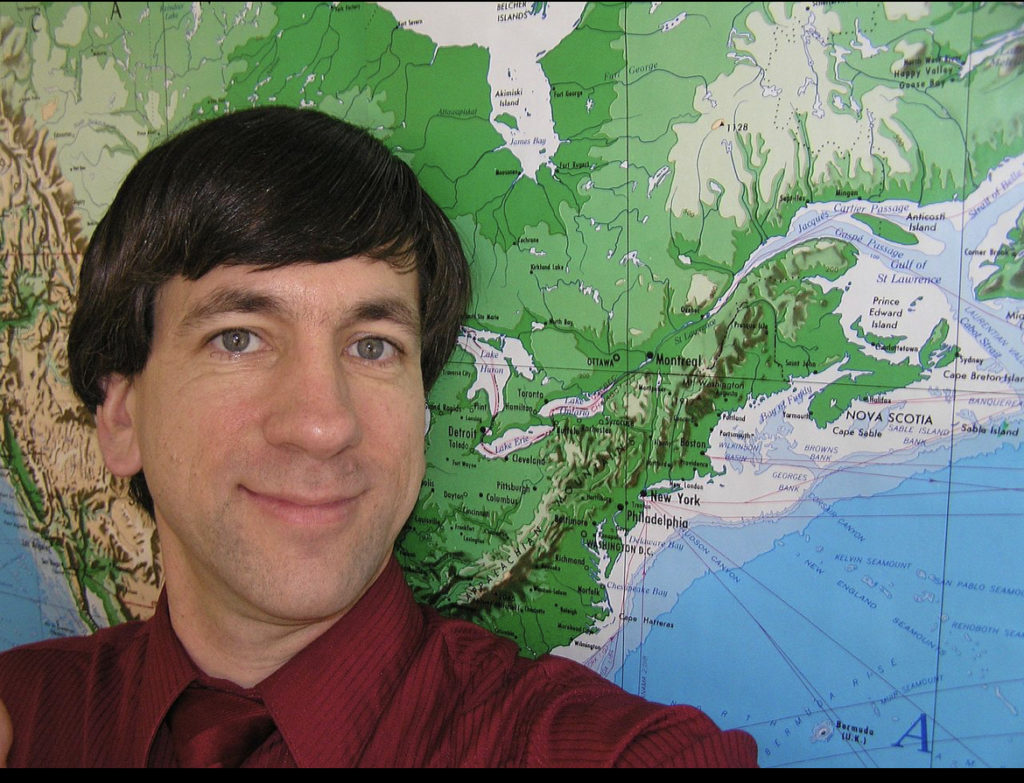
Joseph Kerski is a geographer with a focus on the use of Geographic Information Systems (GIS) in education. He has served as the President of the National Council for Geographic Education and has given 2 TED Talks on “The Whys of Where”. He holds 3 degrees in geography and has served as geographer in 4 sectors of society, including government (NOAA, US Census Bureau, USGS), academia (Penn State, Sinte Gleska University, University of Denver, others), private industry (as Education Manager for Esri), and nonprofit organizations (with roles in geography and education associations). Joseph authored over 75 chapters and articles on GIS, education, and related topics, and visits 35 universities annually. He conducts professional development for educators. He has created over 5,000 videos, 750 lessons, 1,000 blog essays, and authored 8 books, including Interpreting Our World, Essentials of Environment, Spatial Mathematics, Tribal GIS, International Perspectives on Teaching and Learning, and the GIS Guide to Public Domain Data. But as a lifelong learner, he feels as though he’s just getting started and thus actively seeks mentors, partners, and collaborators.
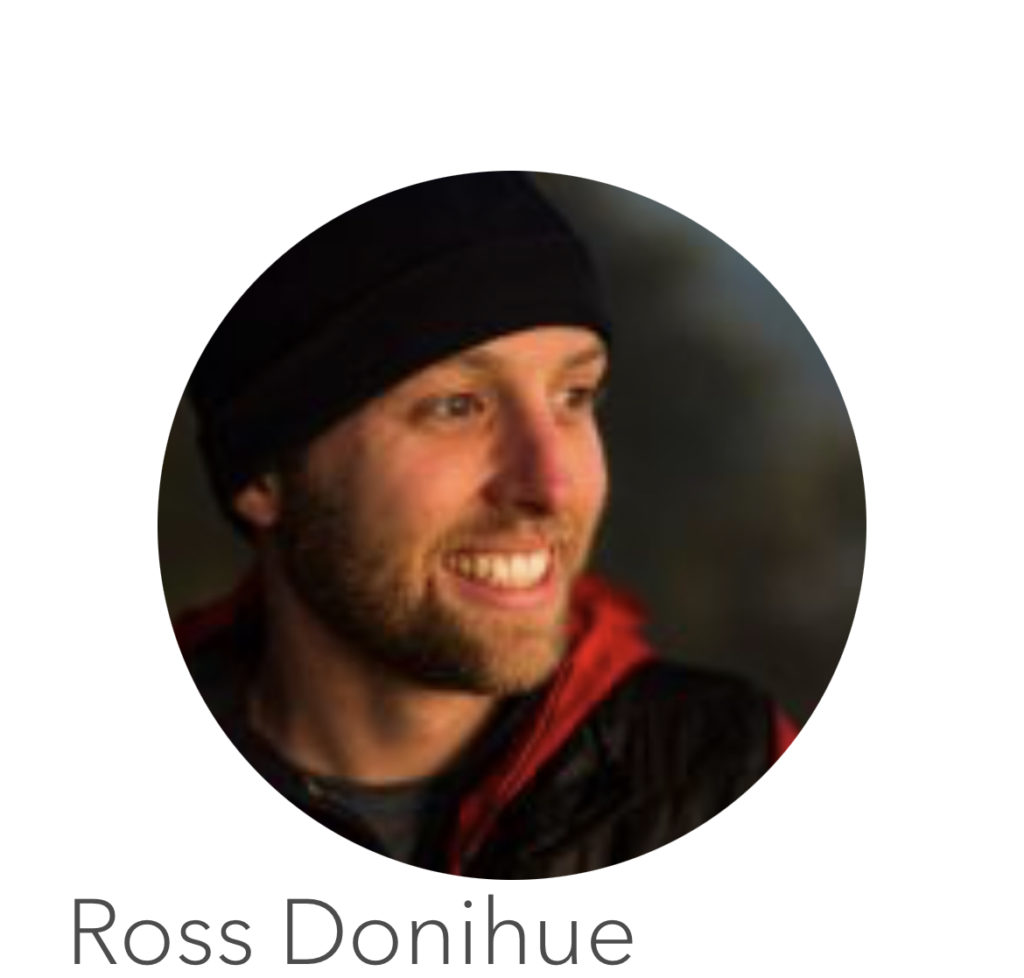
Ross Donihue is a cartographer and product engineer on Esri’s StoryMaps team. He uses place-based storytelling to engage users through beautiful, informative, and inspiring cartography. When he’s not making maps, he’s likely carving a spoon, making photos, or dreaming of mountains and fermentation. Donihue works at the intersection of maps, design, and storytelling. In 2012 he founded Maps for Good, a visual storytelling team that make one-of-a kind maps and digital media for better-world initiatives. Ross uses place-based data and evolving technologies to meet the challenges of the changing environment. Ross is a National Geographic grant reviewer and explorer.
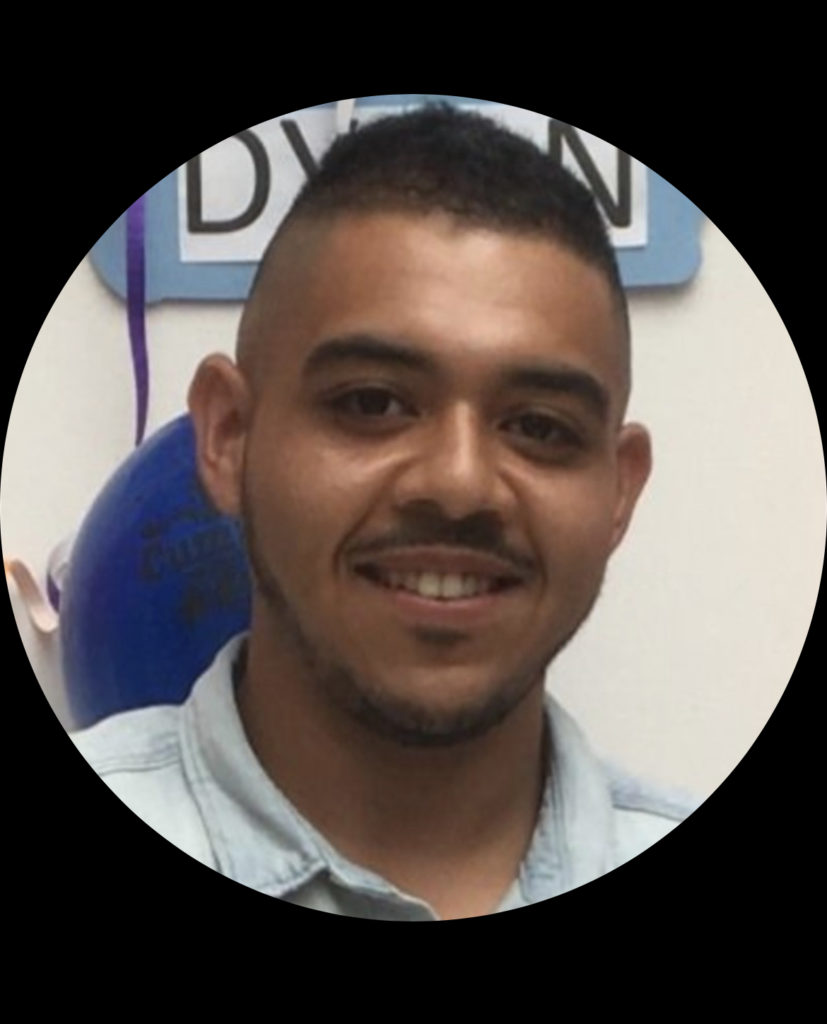
Dylan Williams is a versatile, dedicated, and self-motivated professional with formal training as an outreach specialist and a public historian. William’s has accumulated several years of experience working in museum, archival, and historic preservation settings, including facilitating historic resource evaluation projects in accordance with CEQA, NHPA, NEPA, and other ordinances. Williams has also developed adequate experience providing corporate-level administrative and project management support by engaging in internal and public outreach, compiling cumulative reports and project databases, and coordinating collaborative efforts between various stakeholders and departments. William’s intellectual and research interests as a graduate student in history include 19th century African American history, Reconstruction-era history, 20th century urban history, and historical memory embodied by the built environment.
Reproductive Injustices in (Her)story of California: Dr. Cynthia Cardona in Discussion with Dr. Alicia Gutierrez-Romine
Please join us for an evening dialogue with Drs. Cynthia Cardona and Alicia Gutierrez-Romine about the history of reproductive injustices in California. Drs. Cardona and Gutiérrez-Romine will discuss the history of “illegal abortions,” and student-centered pedagogy that fosters inquiry about reproductive rights in the past to address the contemporary changing landscape.
To view this event, click the link below.
An Evening with Gustavo Arellano
Join us for an evening with Gustavo Arellano, as he discusses writing about the history of Southern California and the West.
To view this event, click the link below:
Passcode: #ocSM3Ug
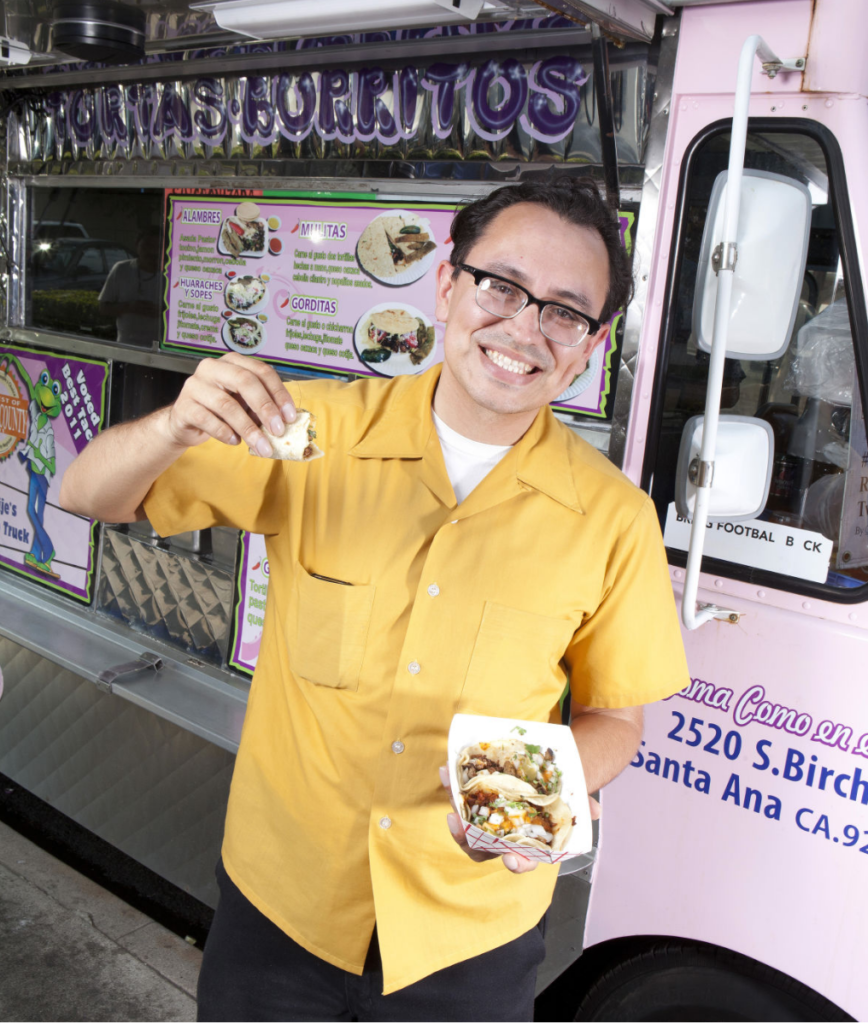
Gustavo Arellano is the author of Orange County: A Personal History and Taco USA: How Mexican Food Conquered America. He is a features writer for the Los Angeles Times and has been an essayist and reporter for various publications as well as a frequent commentator on radio and television. He was formerly editor of OC Weekly, an alternative newspaper in Orange County, California, and penned the award-winning “¡Ask a Mexican!,” a nationally syndicated column in which he answered any and all questions about America’s spiciest and largest minority. Gustavo Arellano’s ¡Ask a Mexican! column has a circulation of more than two million in thirty-eight markets (and counting). He has received the President’s Award from the Los Angeles Press Club, an Impact Award from the National Hispanic Media Coalition, and a 2008 Latino Spirit Award from the California State legislature. Arellano has appeared on the Today show, Nightline, NPR’s Talk of the Nation, and The Colbert Report.
Gustavo is the recipient of awards ranging from the Association of Alternative Newsweeklies Best Columnist to the Los Angeles Press Club President’s Award to an Impacto Award from the National Hispanic Media Coalition, and was recognized by the California Latino Legislative Caucus with a 2008 Spirit Award for his “exceptional vision, creativity, and work ethic.” Gustavo is a lifelong resident of Orange County and is the proud son of two Mexican immigrants, one whom came to this country in the trunk of a Chevy.
Collecting Testimonios: A Plática with Dr. Lani Cupchoy & Azalea Camacho, Facilitated by Dr. Jorge N. Leal
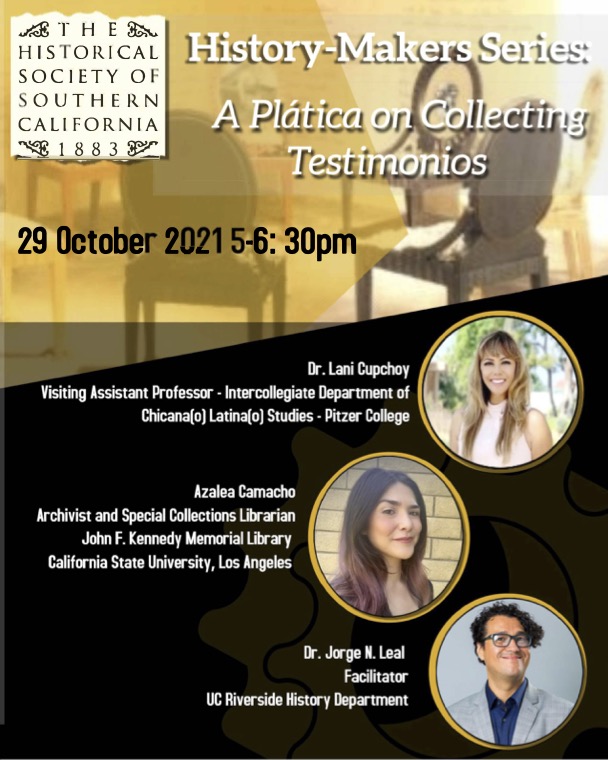
October 29th, 2021 5:00PM
Join Dr. Jorge N. Leal in conversation with Dr. Lani Cupchoy and Special Collections Archivist at Cal State Los Angeles, Azalea Camacho as they discuss the important work of collecting and preserving community narratives during the COVID19 pandemic. This plática features student-centered stories and oral history interviews that reveal the lived experiences of under-represented first-generation voices from the local community.
To watch the video of this presentation click the link below and enter the password to view.
Password: @1ELe8JM
HSSC Ahmanson Foundation Speaker Webinar
Presenting Dr. Susan Phillips
September 15th, 2021
5:00PM PST
Join the HSSC on Wednesday September 15th at 5pm for the first virtual event celebrating one of our Ahmanson Book Award winners: Dr. Susan Phillipswill present on The City Beneath: A Century of Los Angeles Graffiti (Yale University Press, 2019.)

Susan A. Phillips has studied gangs and the US prison system since 1990. Phillips received her Ph.D. in anthropology in 1998 from UCLA, where she taught for four years before coming to Pitzer College. Phillips is interested in theories of violence, in the relationship between gangs and the state, and in utilizing academic writing and scholarship toward criminal justice reform. She currently directs community-based research programs in Ontario, California for Pitzer College and is a member of the Environmental Analysis field group, where she contributes curriculum on urban studies.
TO VIEW A RECORDING OF THIS EVENT CLICK THE LINK BELOW
Passcode: Gp8#nXw.
105 Years of #StopAsianHate
Webinar with Dr. Gordon Chang and Dr. Weiling Deng
April 27th, 2021
6:00PM PST
Passcode: #M$p60!y
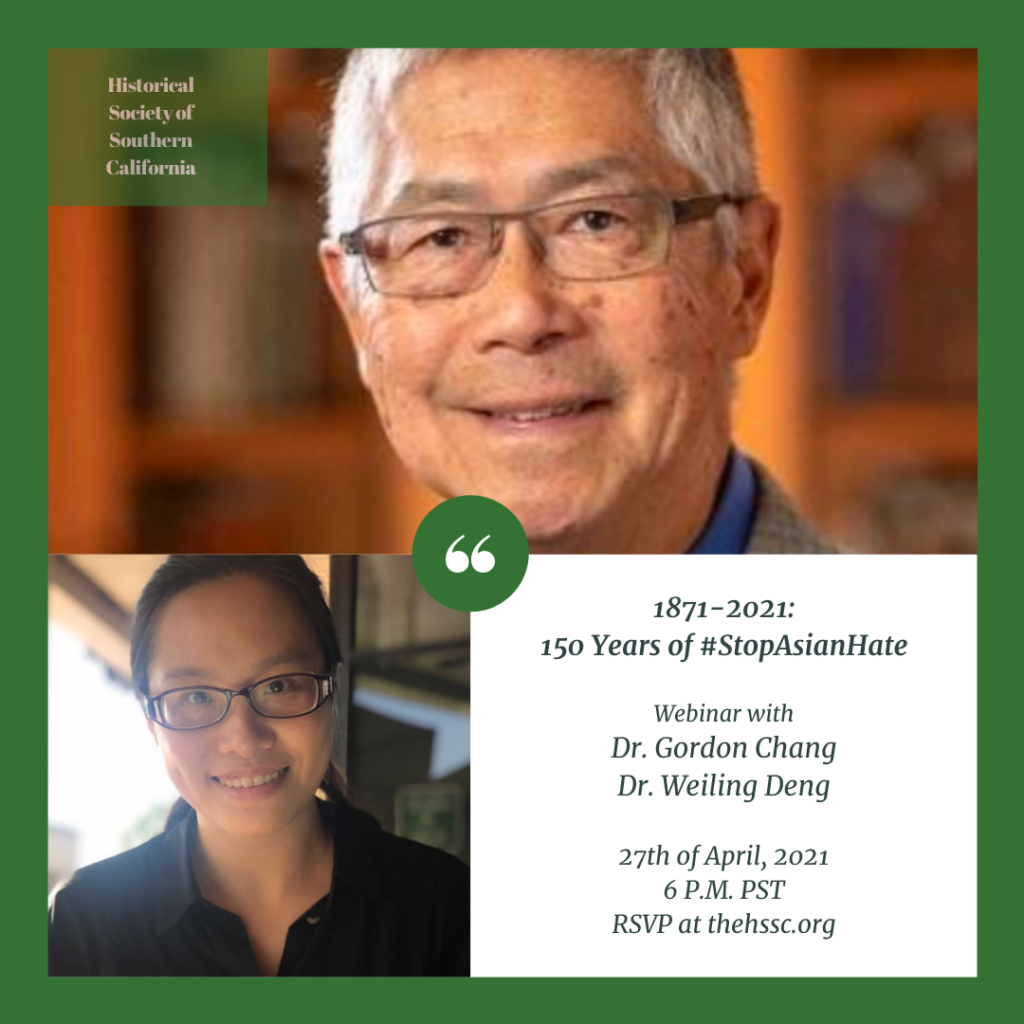
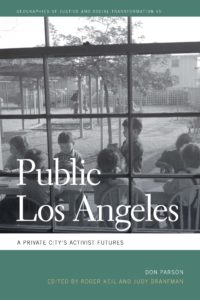 “Public Los Angeles.” A book talk about housing, popular politics, and the formation of modern LA. Wednesday, August 19, 2020, at 6pm PDT on Zoom.
“Public Los Angeles.” A book talk about housing, popular politics, and the formation of modern LA. Wednesday, August 19, 2020, at 6pm PDT on Zoom.
Public Los Angeles: A Private City’s Activist Futures is a collection of unpublished work by the late Los Angeles historian and urban scholar Don Parson (see Southern California Quarterly articles below) presenting insights into the collectivism, networks of solidarity, and government policy in early to mid-twentieth century LA. The book also contains essays by twelve friends and mentors that contextualize how Public Los Angeles can help shape our understanding of public housing, judicial activism, gender and housework, and the geography of race and class in modern-day Los Angeles. The publication was supported by a grant from the HSSC/Ahmanson Foundation.
Hosted by Donna Schuele, the HSSC President, the conversation included the book’s co-editors Judy Branfman (UCLA) and Roger Keil (York), Rachael Baker (Detroit Renter City), Mike Davis, Sue Ruddick (University of Toronto), and Marques Vestal (UCLA) to discuss the region’s complex political and cultural history, Parson’s legacy, and visions for the future.
Don Parson Articles
Don Parson published articles in the Southern California Quarterly. Those articles are available as PDFs here.
______________________________________________________________________________
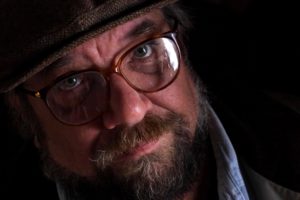 -George A.V. Dunning Lecture (Thursday, October 18, 2018)
-George A.V. Dunning Lecture (Thursday, October 18, 2018)
Michael Schumacher, “A Time to Be Born, A Time to Die: Robert F. Kennedy in California”
Thursday, October 18, 2018
Co-sponsored by Institute for the Study of Los Angeles
Occidental College, Morrison Lounge in Johnson Student Center
1968—rife with riots, assassinations, anti–Vietnam War protests, and realpolitik—was one of the most tumultuous years in the twentieth century, culminating in one of the most consequential presidential elections in American history. The Contest tells the story of that contentious election and that remarkable year.
______________________________________________________________________________
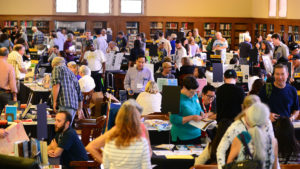 -13th-annual Los Angeles Archives Bazaar (Saturday, October 20, 2018)
-13th-annual Los Angeles Archives Bazaar (Saturday, October 20, 2018)
Doheny Memorial Library
University of Southern California
9:00am-5:00pm
______________________________________________________________________________
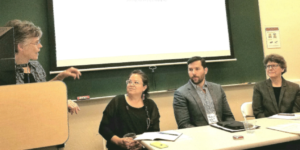
-Sponsored Session at the American Historical Association, Pacific Coast Branch Annual Meeting (August 2-4, 2018)
“Celebrating and Surveying One Hundred Issues: The Journals of the Historical Society of Southern California”
Chair and Commentator: Merry Ovnick, Editor, Southern California Quarterly
Presenters:
“Early California.” Mary F. Casey, California State University, Northridge
“Native Peoples,” Corey D. Blanchard, University of Southern California
“Race and Ethnicity.” Yessenia Navarrete Hunter, University of Southern California
The AHA-PCB 2018 conference was held at Santa Clara University.
______________________________________________________________________________
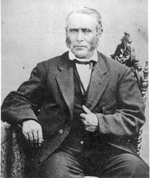
-“Juan Avila, Rancho Niguel, and the Liberation of the Native Sons of the Pueblo of Los Angeles,” Laguna Nigel Historical Society (Thursday, June 28, 2018)
Donna Schuele spoke about “Juan Avila, Rancho Niguel, and the Liberation of the Native Sons of the Pueblo of Los Angeles.” The 1830s marked the secularization of Mission San Juan Capistrano and the distribution of its lands to the second generation of the founding families of Los Angeles. Receiving their own land grants allowed native sons to escape the strictures of patriarchy while at the same time establishing themselves as patriarchs. But these land grants proved to be a double-edged sword: families avoided the sorts of tensions inherent in independence born of rebellion but at the same time lost the collective commitment necessary to the success of the rancho enterprise. This talk tells the story of the Avila family when its eldest son, Juan, left his father’s rancho to strike out on his own as the grantee of Rancho Niguel.
The event was part of the June membership meeting of the Laguna Nigel Historical Society. The organization’s website is: http://www.lagunaniguelhistoricalsociety.org
______________________________________________________________________________
-Special Event: Last Chance Tour of the Los Angeles Times Building, Downtown Los Angeles (Wednesday, June 13, 2018)
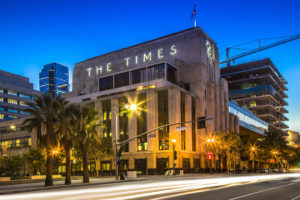
The tour included the Globe Lobby, historic displays, newsrooms, television sets and test kitchen, and was given by Los Angeles Times tour guide Darrell Kunitomi.
______________________________________________________________________________
-“Major League Baseball Moves West”, Whittier College (Wednesday, April 4, 2018)
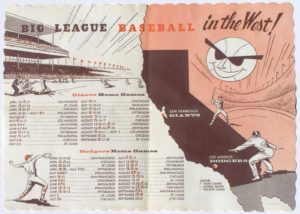
It’s been six decades since Major League Baseball arrived in California, opening the door for a wide range of professional sports entertainment up and down the Pacific Coast.
Andy McCue, author of “Mover & Shaker: Walter O’Malley, the Dodgers & Baseball’s Westward Expansion,” and Robert Garratt, author of “Home Team: The Turbulent History of the San Francisco Giants,” discussed the franchise moves, the consequences, and how the teams have become embedded in their communities.
A major area of discussion was the history of the team’s stadiums, with O’Malley’s initial struggle to get Dodger Stadium built followed by years of success and iconic status for the ballpark. In San Francisco, where the city-owned model was followed in the spirit of its times, Candlestick Park became a chilly boondoggle which led to two bouts of brinksmanship to keep the team in the Bay Area. The eventual construction of AT&T Park led to success on and off the field and strong ties to its fans.
Andy McCue is a retired newspaper reporter. “Mover & Shaker” won the Seymour Medal for 2015’s best book of baseball history or biography from the Society for American Baseball Research. Garratt, whose “Home Team” was nominated for the Seymour Medal this past year, is a Professor Emeritus of English and Humanities at the University of Puget Sound.
______________________________________________________________________________
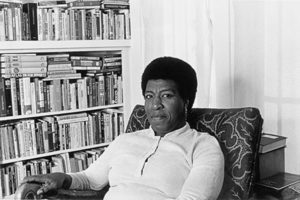 -George A.V. Dunning Lecture, Pasadena Museum of History (Thursday, March 29, 2018)
-George A.V. Dunning Lecture, Pasadena Museum of History (Thursday, March 29, 2018)
“Telling My Stories: The pioneering fiction of Octavia E. Butler”
Natalie Russell, Assistant Curator of Literary Collections, Huntington Library
Octavia E. Butler was the first female African-American writer to make science fiction her career. A shy, only child from Pasadena, California, she dreamed of ordinary people in extraordinary worlds, and extraordinary people in ordinary worlds, and put them on the page. Her stories brought the voice of women of color to a genre traditionally dominated by white men. That powerful voice tackled issues, not just about race, but themes that continue to resonate with a wide audience: power, identity, gender, class, the environment, and what it means to be human.
______________________________________________________________________________
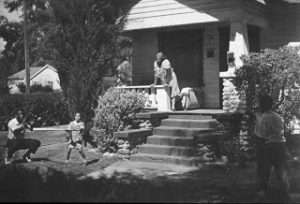 -Lecture, at the Pasadena Senior Center, hosted by the Pasadena Museum of History (Tuesday, February 20, 2018)
-Lecture, at the Pasadena Senior Center, hosted by the Pasadena Museum of History (Tuesday, February 20, 2018)
“The Robinsons in Pasadena: A Life Between Segregation and Integration”
Amy Essington, Lecturer, California State University, Fullerton and Cal Poly Pomona
In the Far West, the system of racism was not the formal system found in the South. It was instead a more fluid and uncertain system which people of color had to navigate. Africans Americans in Pasadena lived a reality experienced by many people of color in Southern California in the 1920s and 1930s. Mallie Robinson and her five children, Edgar, Frank, Mack, Willa Mae, and Jackie, lived in a community that straddled segregation and integration. Their experiences show the racism, discrimination, and opportunity for African Americans in Pasadena before World War II.
______________________________________________________________________________
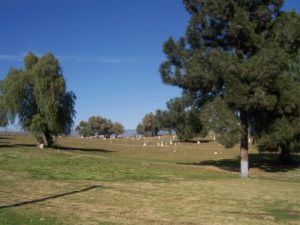 -Tour of Riverside Historical Sites (Saturday, January 27, 2018)
-Tour of Riverside Historical Sites (Saturday, January 27, 2018)
This tour was co-sponsored by the Historical Society of Southern California and the Riverside Historical Society.
The tour was led by Will Cowan, a doctoral candidate in history at the University of Southern California and and David Rios, a librarian at the University of California Riverside–he very much enjoys genealogy and soaking up local history. The tour included stops at the Agua Mansa Pioneer Cemetery, the Trujillo Adobe, and a tour of the Mission Inn.
______________________________________________________________________________
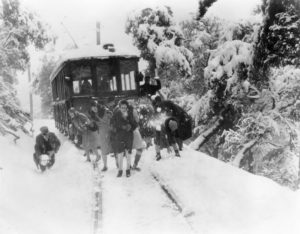 -HSSC Holiday Party (Saturday, December 2, 2017)
-HSSC Holiday Party (Saturday, December 2, 2017)
The Historical Society of Southern California hosted a Holiday Party at the Workman and Temple Family Homestead Museum Saturday, December 2, 2017.
The HSSC will kicked off the season with food, refreshments, and good cheer. ______________________________________________________________________________
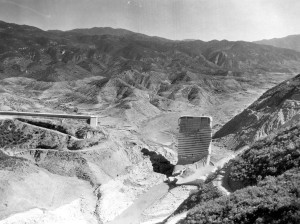
Just after midnight on March 12, 1928, the recently completed St. Francis Dam collapsed, sending a 12-billion gallon wall of water through the narrow canyon and ultimately to the Pacific Ocean. The disaster killed at least 450 people and effectively ended the storied career William Mulholland, who designed the dam and presided at opening ceremonies just two years earlier. The tour of the dam site was led by geologist Mark Vincent. Mr. Vincent, a graduate of CSULA and an engineering geologist for GeoLogic Associates, discussed the history and the geology of the area and the engineering and geological issues that led to the dam’s failure.
______________________________________________________________________________
 12th-annual Los Angeles Archives Bazaar (Saturday, October 21, 2017)
12th-annual Los Angeles Archives Bazaar (Saturday, October 21, 2017)
Saturday, October 21, 2017
Doheny Memorial Library, University of Southern California
The HSSC displayed artifacts from its collection and material about upcoming events.
______________________________________________________________________________
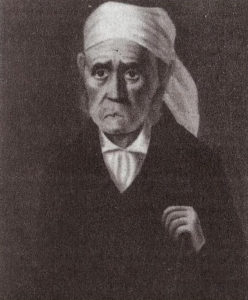
(Cal State LA) will explore the rise and fall of Rancho Sausal Redondo.
This free event was sponsored by the History & Genealogy Department of the Los Angeles Public Library and the Historical Society of Southern California.
______________________________________________________________________________
Lecture, Pasadena Museum of History, At Home Series, Kenneth Marcus on “Musical Metropolis” (Tuesday, October 3, 2017)
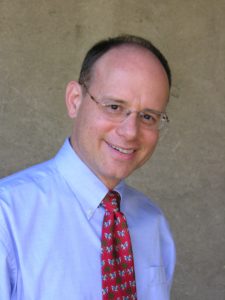
HSSC President Kenneth Marcus (University of La Verne) will speak about “Musical Metropolis” at a Pasadena Museum of History (PMH) At Home Series member event.
The Pasadena Museum of History At Home series, which combines presentations by outstanding speakers with visits to architecturally unique homes.
______________________________________________________________________________
HSSC Tour of Rancho Los Cerritos with a Garden Lunch (Saturday, September 30, 2017)
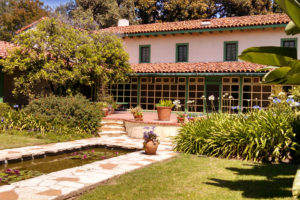 The tour included the house, the gardens, and unique opportunity to have lunch on the grounds in a private garden.
The tour included the house, the gardens, and unique opportunity to have lunch on the grounds in a private garden.
The house tour of the historic Monterey-style adobe included work areas like the mayordomo’s room and blacksmith shop as well as living spaces like the parlor, library, and master bedroom. The garden tour included the vibrant gardens that grace the property today including trees that date back to the mid-19th century, as well as lush landscaping designed in the early 1930s by notable landscape architect Ralph Cornell.
______________________________________________________________________________
Dunning Lecture Series, Pasadena Museum of History, Andrea Thabet on “Simon Says: How Norton Simon Transformed a Failing Art Museum into a Cultural Powerhouse” (Tuesday, September 12, 2017)
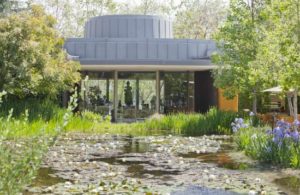
As part of the George A.V. Dunning Lecture Series, Dr. Andrea Thabet will discuss the construction and dissolution of the Pasadena Art Museum between 1969 and 1975, when business tycoon and art collector Norton Simon rescued the failing museum and transformed it into a West Coast cultural powerhouse. Founded as the Pasadena Art Institute in 1922, by 1954 the Institute had acquired modern art collections of tremendous importance and underwent a reinvention of sorts. Renamed the Pasadena Art Museum (PAM), plans were put in place to construct a new building at the corner of Colorado Boulevard and Orange Grove Avenue. PAM’s re-opening in 1969 was deemed a victory for modern artists carving out their own cultural spaces, yet by 1974, PAM was drowning in construction debts. After exhausting all other possibilities, museum trustees allowed Simon to assume financial and operational management of the museum. Combining his own extensive collection of Old Masters and Impressionist art with PAM’s collections, Simon revamped the museum’s policies, renovated the gallery space, and changed the name to the Norton Simon Museum within two years. Many in the bohemian art world saw Simon’s rescue of PAM as a hostile takeover that signaled the end of L.A.’s vibrant modern art movement. Without a doubt, it dealt a serious blow to the modern art scene for both collectors and artists. However, Simon’s decision to house his internationally renowned art collection on the West Coast in Los Angeles, would ultimately prove to be a cultural boon for the metropolis. The Norton Simon Museum is now widely considered one of Southern California’s cultural jewels, with one of the most “remarkable private art collections ever assembled.”
______________________________________________________________________________
Sponsored Session at the American Historical Association, Pacific Coast Branch Annual Meeting (Saturday, August 5, 2017)
The HSSC co-sponsore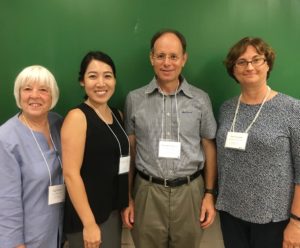 d the session “A New Era: Racial and Defense Culture in Mid-Twentieth Century Southern California” at the American Historical Association, Pacific Coast Branch Annual Meeting at California State University, Northridge, August 3-5, 2017.
d the session “A New Era: Racial and Defense Culture in Mid-Twentieth Century Southern California” at the American Historical Association, Pacific Coast Branch Annual Meeting at California State University, Northridge, August 3-5, 2017.
Chair and Comment: Peggy Renner, Glendale Community College
“Jackie Robinson in Southern California: A Life between Segregation and Integration”
Amy Essington, California State University, Fullerton
“African American Ballet and Protest in Postwar Los Angeles”
Kenneth H. Marcus, University of La Verne
“Making Home Again: Japanese American Resettlement in Post-WWII Los Angeles”
Kristen Hayashi, University of California, Riverside
______________________________________________________________________________
HSSC Tour of the San Gabriel Mission and La Casa de Lopez de Lowther Adobe
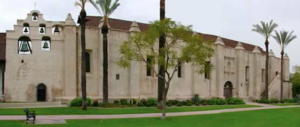 Saturday, June 10, 2017
Saturday, June 10, 2017
The HSSC toured both the San Gabriel Mission and the La Casa de Lopez de Lowther Adobe.
The San Gabriel Mission, named for the Archangel Gabriel, was founded in 1771 by Spanish Franciscan missionaries and remains one of the best preserved missions in California. The Mission’s historic church, constructed in 1805, is the oldest functioning Catholic Church in the Archdiocese of Los Angeles. The San Gabriel Mission continues to serve as a parish church for the City of San Gabriel. Since 1908, the Claretian Missionaries have overseen the care and maintenance of the mission’s historic grounds and museum collection.
Built in the early 1800s, La Casa de Lopez de Lowther was part of the San Gabriel Mission complex, situated near the northwest courtyard area. Juan Lopez moved into the house in 1849, and members of his family occupied the home until 1964. Today, La Casa de Lopez de Lowther is closed to the public and serves in a limited role for parish-related functions.
John Macias, History Instructor at Cerritos College and San Gabriel Mission Board chair, and Kim Walters, mission museum curator, led a tour of the San Gabriel Mission site, which included information about the mission itself, the museum collection, and preservation work. The group also toured the Lopez Adobe, which is only open for private tours.
______________________________________________________________________________
-Centinela Adobe Tour and Talk
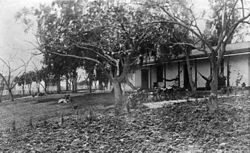 Saturday, June 3, 2017
Saturday, June 3, 2017
The event was co-sponsored by the Historical Society of Centinela Valley.
The Centinela Adobe, also known as La Casa de la Centinela, is a Spanish Colonial style adobe house built in 1834. It is one of the 43 surviving adobes within Los Angeles County. The Adobe was the seat of the 2,000 acre Rancho Aguaje de la Centinela, a Mexican Alta California era land grant. The Rancho, granted to Ygnacio Machado, was partitioned from the much larger Rancho Sausal Redondo (22,500 acres), which was granted to Antonio Ygnacio Avila.
After a tour of the adobe, Dr. Donna Schuele (Cal State LA) presented “The Roots of Inglewood: The Avila Family and the Fight for Rancho Sausal Redondo.”
After the tour and talk, the group met for an optional no-host lunch at Pann’s Restaurant.
______________________________________________________________________________
-HSSC Tour of Historical Society of Long Beach Exhibit “Long Beach Remembers Pearl Harbor”
Tour of Historical Society of Long Beach Exhibit, “Long Beach Remembers Pearl Harbor.”
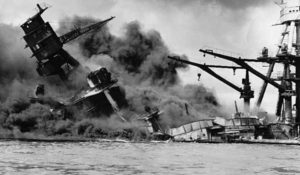
On Saturday, April 1, 2017, attendees visted the Historical Society of Long Beach to view their exhibit “Long Beach Remembers Pearl Harbor.” HSLB Executive Director Julie Bartolotto and historians Craig Hendricks and Timothy Friden gave a tour of the exhibit and spoke about the history related to the exhibit.
About the exhibit: “On December 7, 1941, the bombing of Pearl Harbor shocked the nation and propelled the United States into World War II. Long Beach was a strategic stronghold as a major staging area for the Pacific conflict. The war touched everyone who lived here. Many of the ships in Hawaii on that fateful day spent months in Long Beach before the bombing. Officers and enlisted men on the ships left families and friends in Long Beach. The event not only transformed the war in the Pacific, it transformed the lives of Long Beach residents and the city’s economy and infrastructure. The bombing of Pearl Harbor was the catalyst for airport, harbor, and industrial development, and laid the groundwork for the Long Beach that we know today. Using photos, newspapers, items from its collection and others collected from the community, the exhibition commemorates this important anniversary of the event that forced the United States into the Second World War.”
______________________________________________________________________________
-Los Angeles Public Library Women’s Heritage Month- “Hiding Under Eastern Petticoats? The Emerging Women’s Suffrage Movement in California”
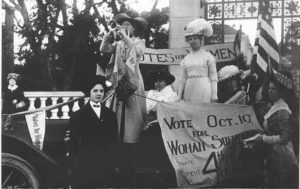 For women demanding the vote after the Civil War, California was a hot-bed of activity, especially with the rival National and American Woman Suffrage Associations battling for alliances in the Golden State.
For women demanding the vote after the Civil War, California was a hot-bed of activity, especially with the rival National and American Woman Suffrage Associations battling for alliances in the Golden State.
Donna Schuele (UCLA, Cal State LA) explored California’s suffrage movement in the 1870s and the ways in which the California movement was driven—and riven—by circumstances both local and national.
This free event was sponsored by the History & Genealogy Department of the Los Angeles Public Library and the Historical Society of Southern California.
Sunday, March 12, 2017, 2:00pm
Los Angeles Public Library
Central Library
Meeting Room A
630 W. Fifth St., Los Angeles, 90071
______________________________________________________________________________
-HSSC Tour and Lecture at U.S. Navy Seabee Museum
Saturday, February 11, 2017
U.S. Navy Seabee Museum, Port Hueneme, CA
Co-sponsored by the U.S. Navy Seabee Museum
Lara Godbille, the Director of the Seabee Museum, spoke on “The U.S. Navy Seabees in Southern 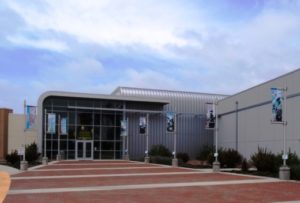 California During World War II.” Attendees visited the newly opened exhibit The U.S. Navy Seabees in Southern California During World War II.” The exhibit tour was followed by a behind-the-scenes tour of the collection, storage, and archives.
California During World War II.” Attendees visited the newly opened exhibit The U.S. Navy Seabees in Southern California During World War II.” The exhibit tour was followed by a behind-the-scenes tour of the collection, storage, and archives.
______________________________________________________________________________
-Lec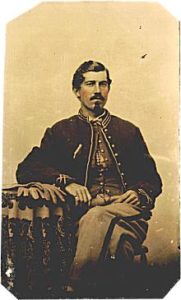 ture: Get Square With the Rebs”: The Charles M. Jenkins Civil War Diary
ture: Get Square With the Rebs”: The Charles M. Jenkins Civil War Diary
Wednesday, November 9, 2016
Leatherby Libraries, Chapman University
Co-Sponsored by the HSSC and the Leatherby Libraries, Chapman University
From January to September 1865, Charles M. Jenkins, the only Los Angeles-area resident to see combat for the Union Army during the Civil War, kept a diary of his experiences in Virginia during and after the final days of the conflict. This remarkable document was forgotten in storage for over 60 years until it was unearthed last year. Speakers included: Louis Di Donato, Wayne Sherman, Paul R. Spitzzeri.
______________________________________________________________________________
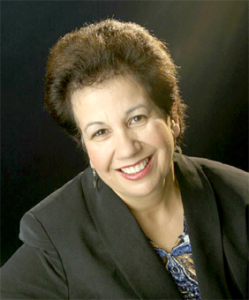 -18th Annual George A. V. Dunning Lecture
-18th Annual George A. V. Dunning Lecture
Saturday, November 5, 2016
University of California, Irvine
Professor Vicki Ruiz spoke on “Why Latino History Matters to U.S. History.”
______________________________________________________________________________
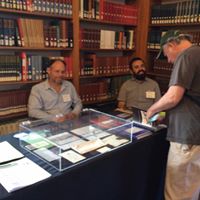 -Archives Bazaar at USC
-Archives Bazaar at USC
Saturday, October 15, 2016
Doheny Memorial Library, University of Southern California Library
The HSSC displayed artifacts from its collection and copies of the Southern California Quarterly.
______________________________________________________________________________
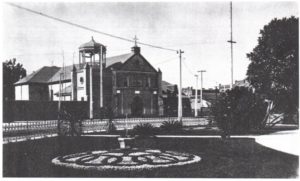 -HSSC Tour of Downtown Los Angeles Noir Sites
-HSSC Tour of Downtown Los Angeles Noir Sites
Saturday, October 8, 2016
El Pueblo de Nuestra Señora la Reina de los Angeles del Río de Porciúncula is the second oldest city in California. Participants learned about Los Angeles and its story, with a focus on noir sites.
______________________________________________________________________________
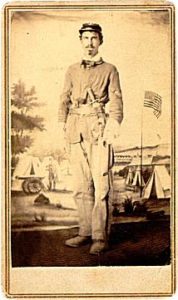 -Lecture: “The Jenkins Brothers: An Eye to the Substantial”
-Lecture: “The Jenkins Brothers: An Eye to the Substantial”
Saturday, September 17, 2016
Drum Barracks Civil War Museum
Co-sponsored by the Drum Barracks Civil War Museum
For 80 years, from the 1850s to the 1930s, Charles and William Jenkins were notable figures in greater Los Angeles. A panel of speakers spoke about these remarkable and controversial brothers in the greater Los Angeles area. A guided tours was given immediately following the program. Speakers included: Louis DiDonato, Alan Pollack, Wayne Sherman, Paul R. Spitzzeri.
______________________________________________________________________________ -Lecture: “The Jenkins Brothers: An Eye to the Substantial”
-Lecture: “The Jenkins Brothers: An Eye to the Substantial”
Saturday, August 27, 2016
Old Town Newhall Library
Co-sponored by the Santa Clarita Valley Historical Society
For 80 years, from the 1850s to the 1930s, Charles and William Jenkins were notable figures in greater Los Angeles. A panel of speakers spoke about these remarkable and controversial brothers and their impact on Los Angeles and the Santa Clarita Valley. Speakers included: Louis DiDonato, Alan Pollack, Wayne Sherman, Paul R. Spitzzeri.
______________________________________________________________________________
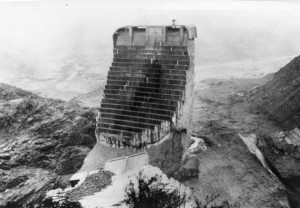 -Tour of St. Francis Dam and the William S. Hart Museum
-Tour of St. Francis Dam and the William S. Hart Museum
Saturday, June 4, 2016
The day included a tour of the St. Francis Dam disaster area and a tour of the William S. Hart Museum and Ranch.
______________________________________________________________________________
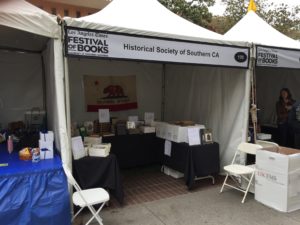 -Los Angeles Times Festival of Books
-Los Angeles Times Festival of Books
April 9-10, 2016
University of Southern California
HSSC publications and pre-1951 quarterlies and annuals were available for sale.
______________________________________________________________________________
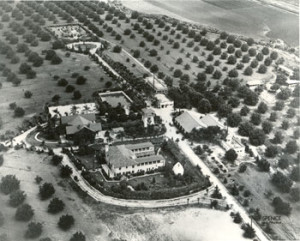 -Behind-the-Scenes Tour of the Homestead Museum and the Rowland House
-Behind-the-Scenes Tour of the Homestead Museum and the Rowland House
Saturday, March 19, 2016
Behind-the-Scenes Tour of the Homestead Museum and Rowland House. The tour included visiting the basements in both the Workman House and La Casa Nueva, the second floor in the Workman House, and storage rooms with archival material, including artifacts owned by the HSSC and temporarily housed at the Homestead.
______________________________________________________________________________
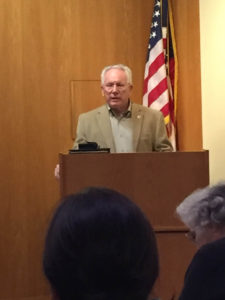 –Associated Historical Societies of Los Angeles County Mini-Conference
–Associated Historical Societies of Los Angeles County Mini-Conference
January 30, 2016
Workman and Temple Family Homestead Museum
Co-hosted by the Workman and Temple Family Homestead Museum
The HSSC and the Workman and Temple Family Homestead Museum co-hosted the Associated Historical Societies of Los Angeles County’s mini-conference. Attendees learned about the current situation of the HSSC, learned about collections management from Paul Spitzzeri, the Assistant Director of the Homestead Museum and Second Vice-President of the HSSC, and took of tour of the Homestead, which included viewing items from the HSSC collection.
______________________________________________________________________________
 -17th Annual George A. V. Dunning Lecture
-17th Annual George A. V. Dunning Lecture
Sunday, November 15, 2015
Workman and Temple Family Homestead Museum
Nat Read spoke about Don Benito Wilson.
____________________________________________________________________________
-Tour 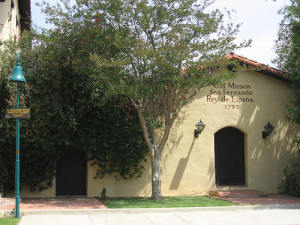 of San Fernando Mission and Archives
of San Fernando Mission and Archives
Saturday, November 7, 2015
The HSSC toured two venerable San Fernando Valley historic landmarks, the San Fernando Mission and the Lopez Adobe. The day included visiting the library and archive at the mission as well as touring the 1883 adobe, recently reopened after several years of restoration.
______________________________________________________________________________
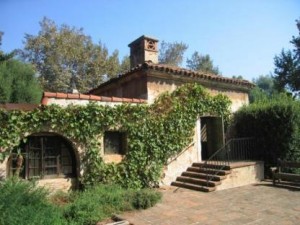 -Admissions Day 2015
-Admissions Day 2015
Wednesday, September 9, 2015
Old Mill
San Marino, California
Alan Jutzi, Avery Chief Curator, Rare Books, spoke on, “The Huntington Library & Southern California History: A Recollection by Alan Jutzi.”
Henry E. Huntington had no personal interest in California history or in documenting his contributions to Southern California. Why then in 1916 did he begin to collect California and Western American history, and after his death how did his library become a major resource for the study of Southern California? Alan Jutzi, longtime Huntington curator, gave his own interpretation of key people and seminal collections in this development and recounted stories of his own encounters with donors, historians, and regional archival collections.
______________________________________________________________________________
